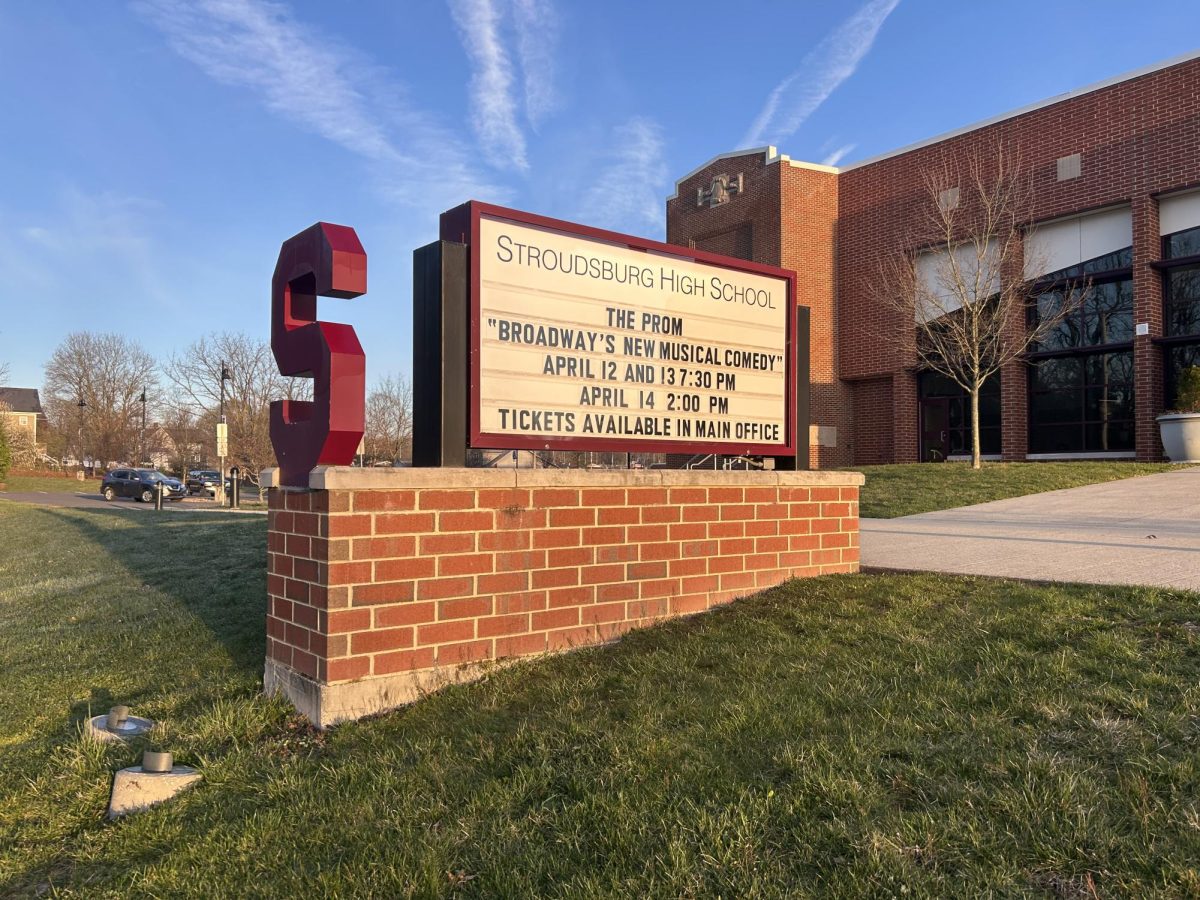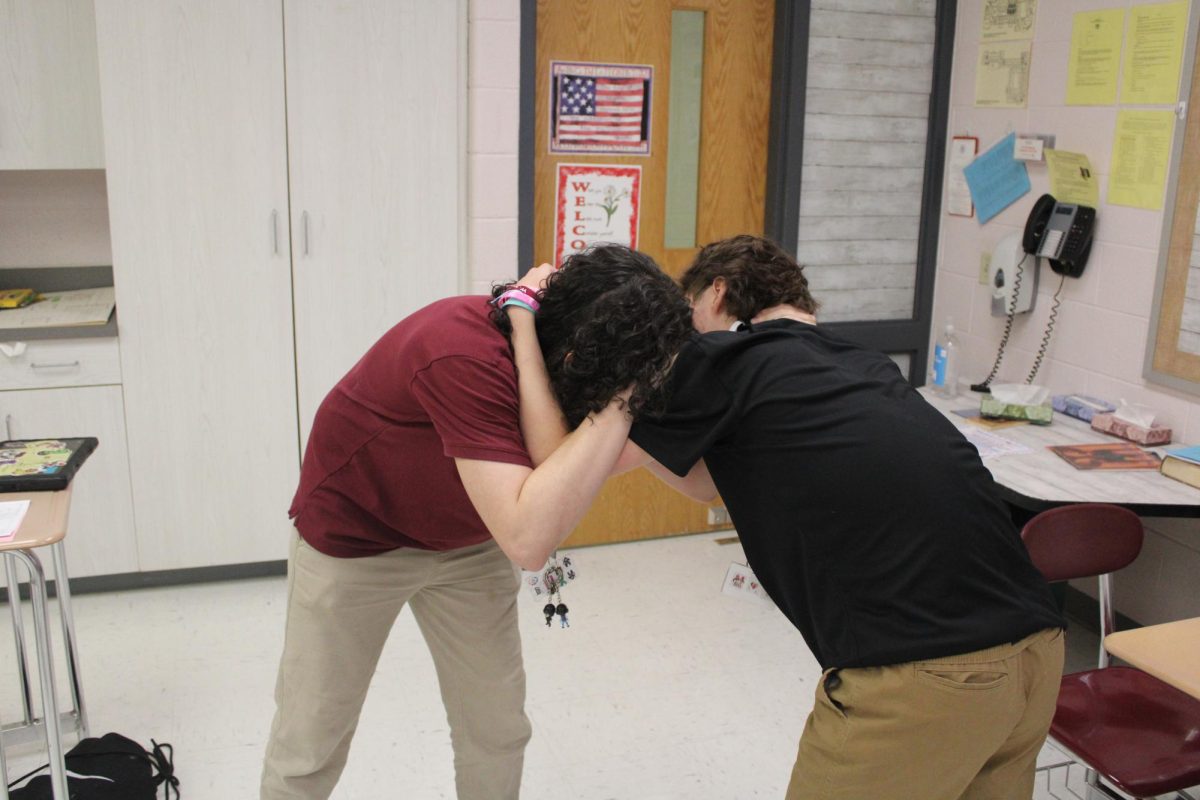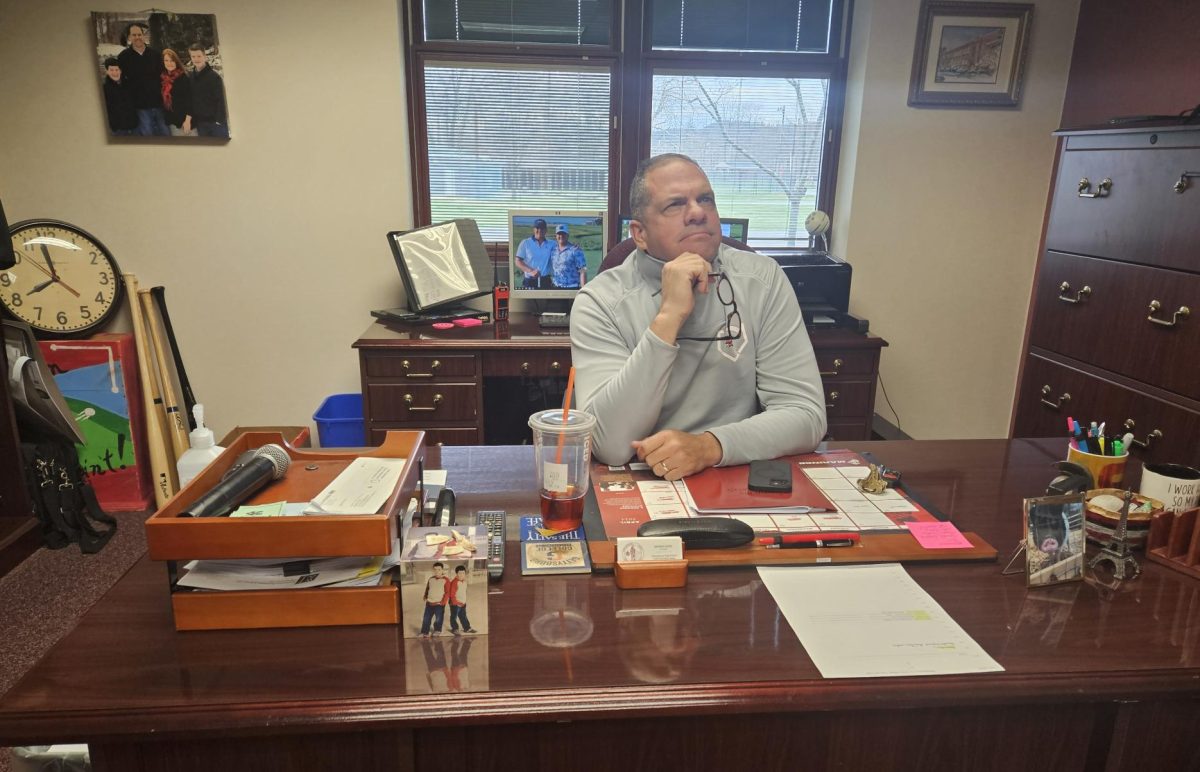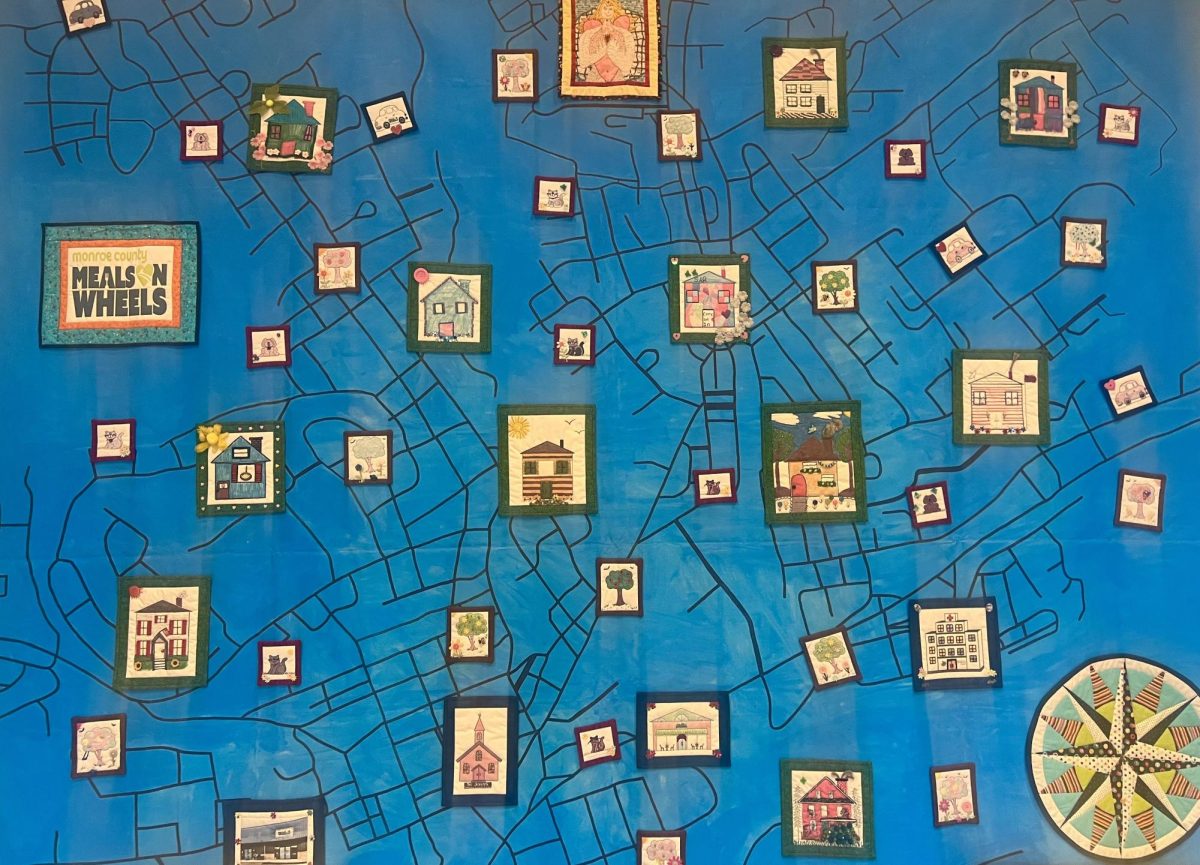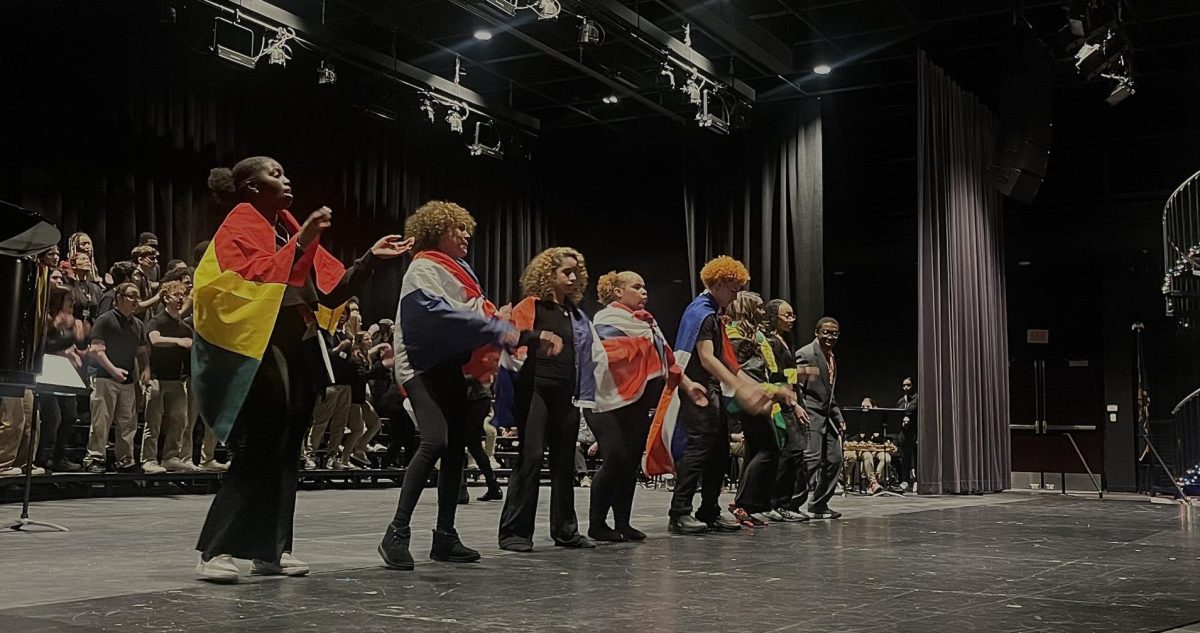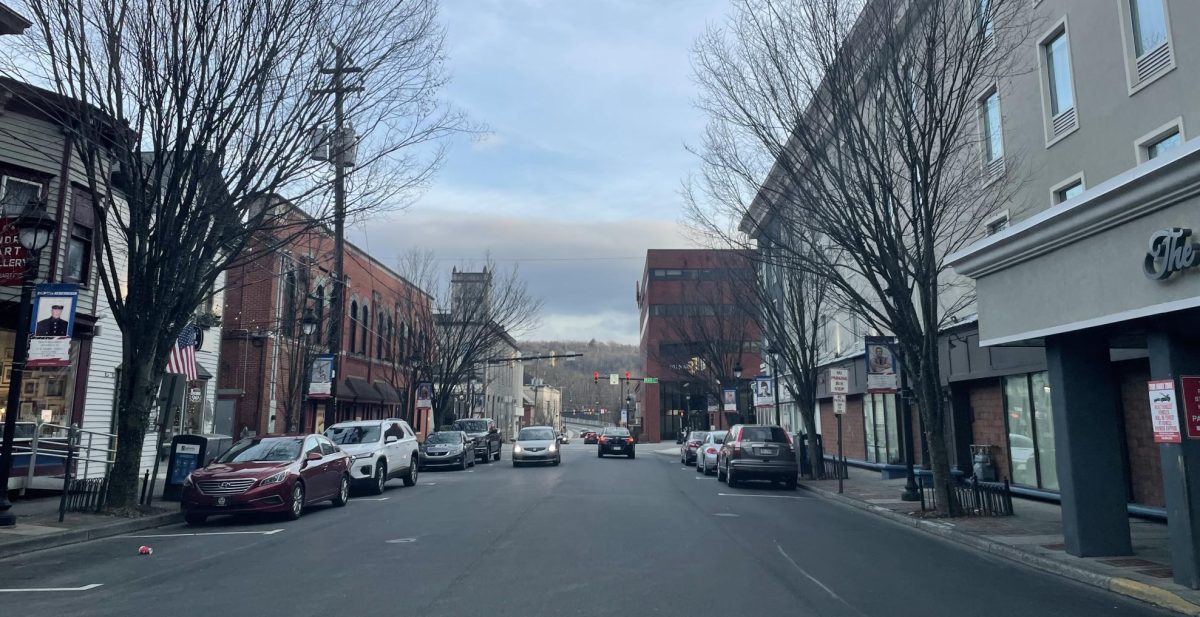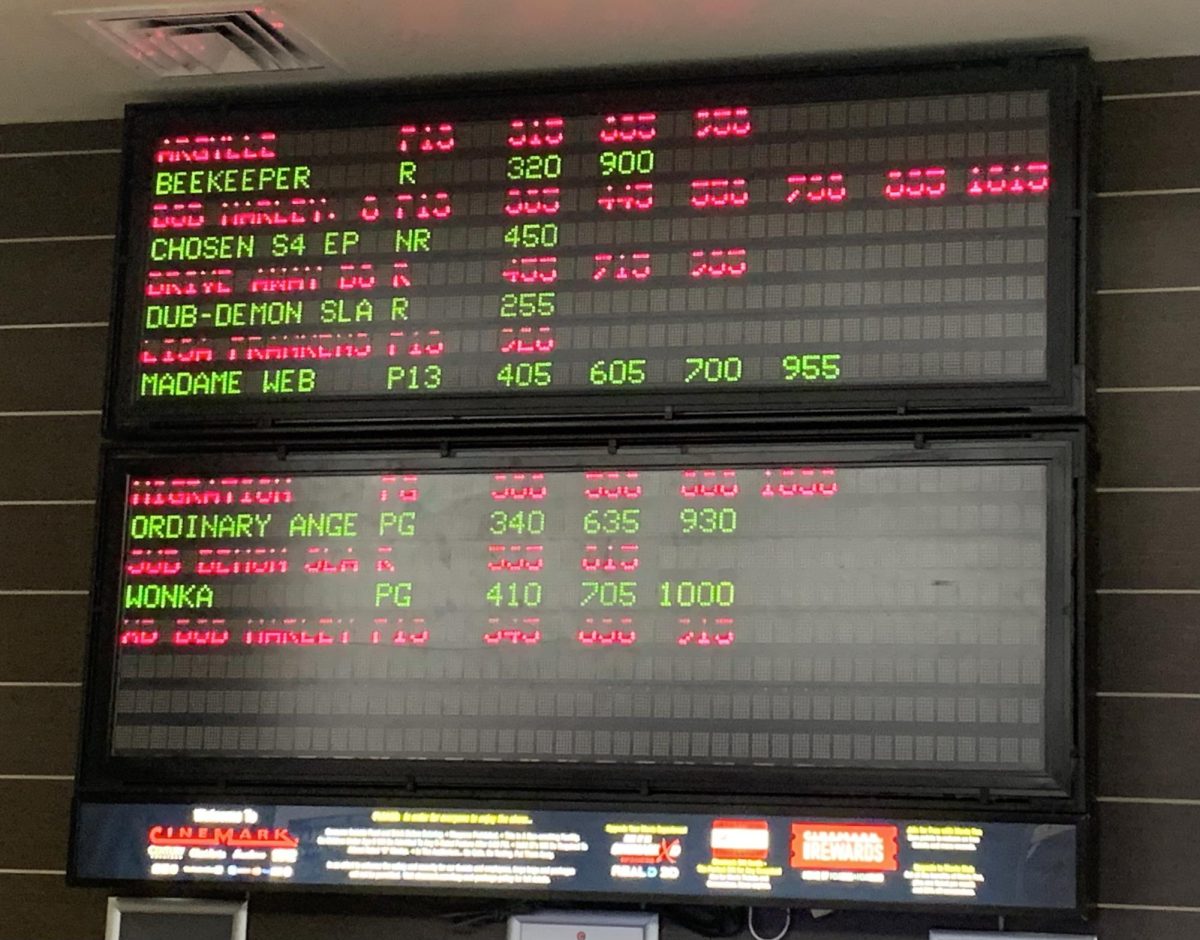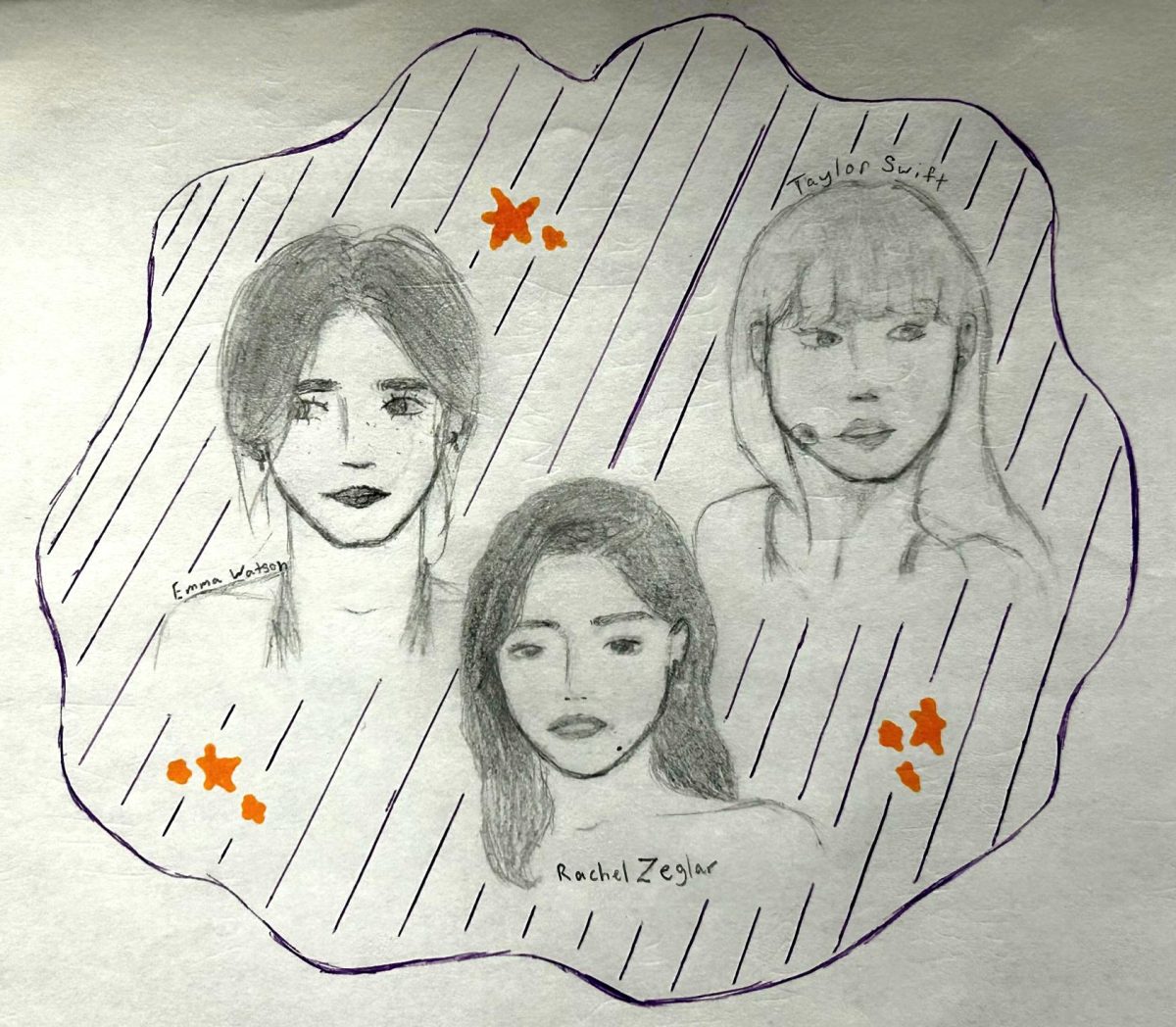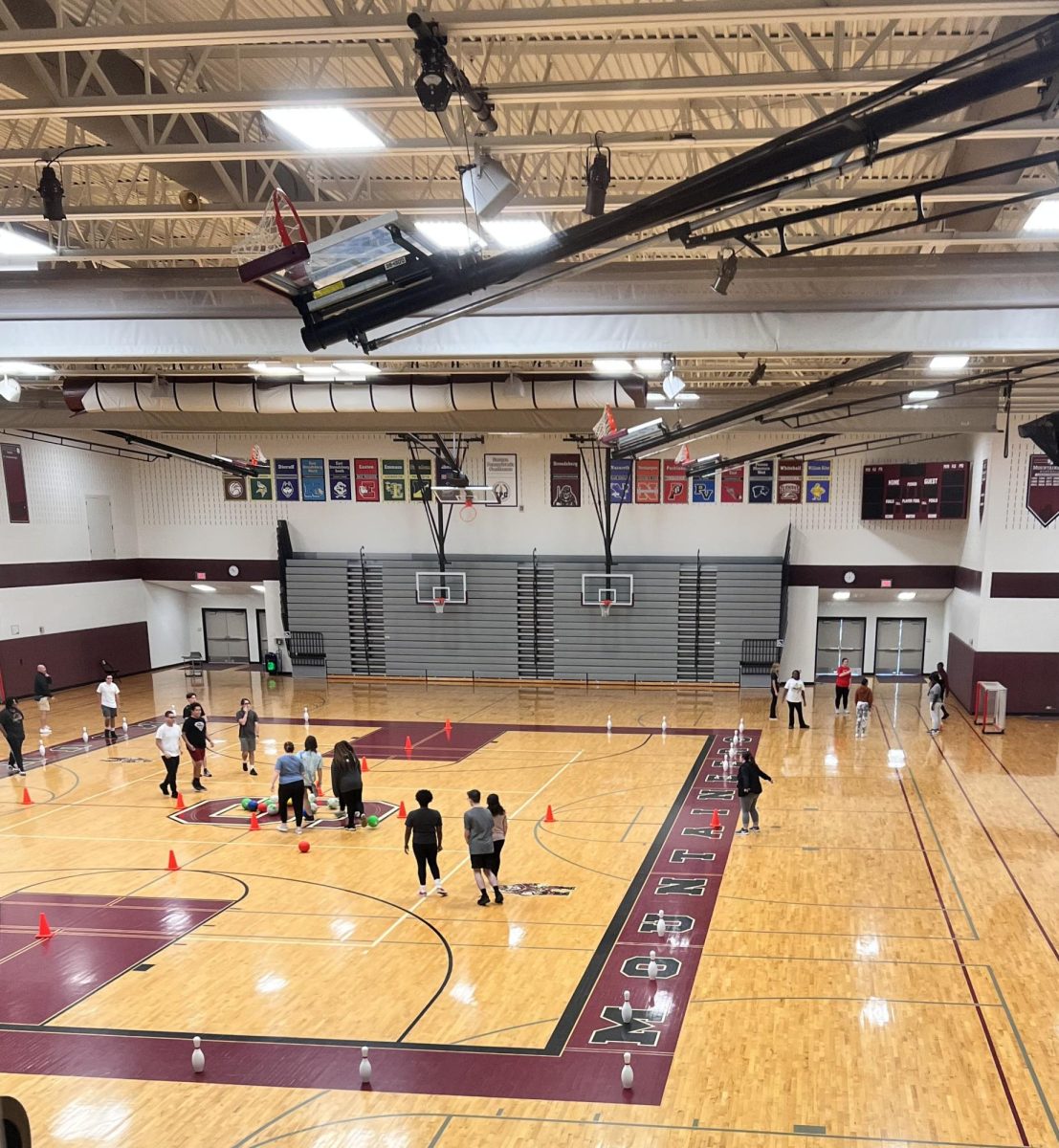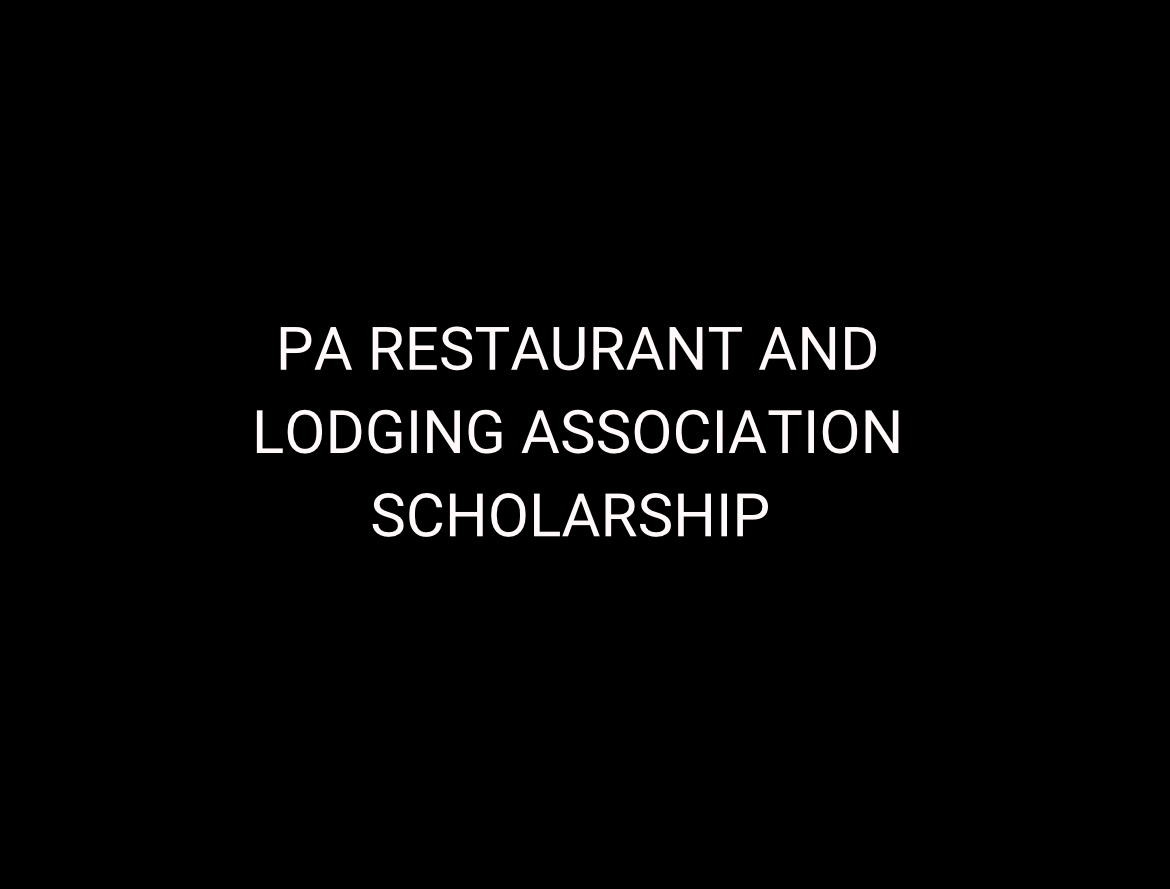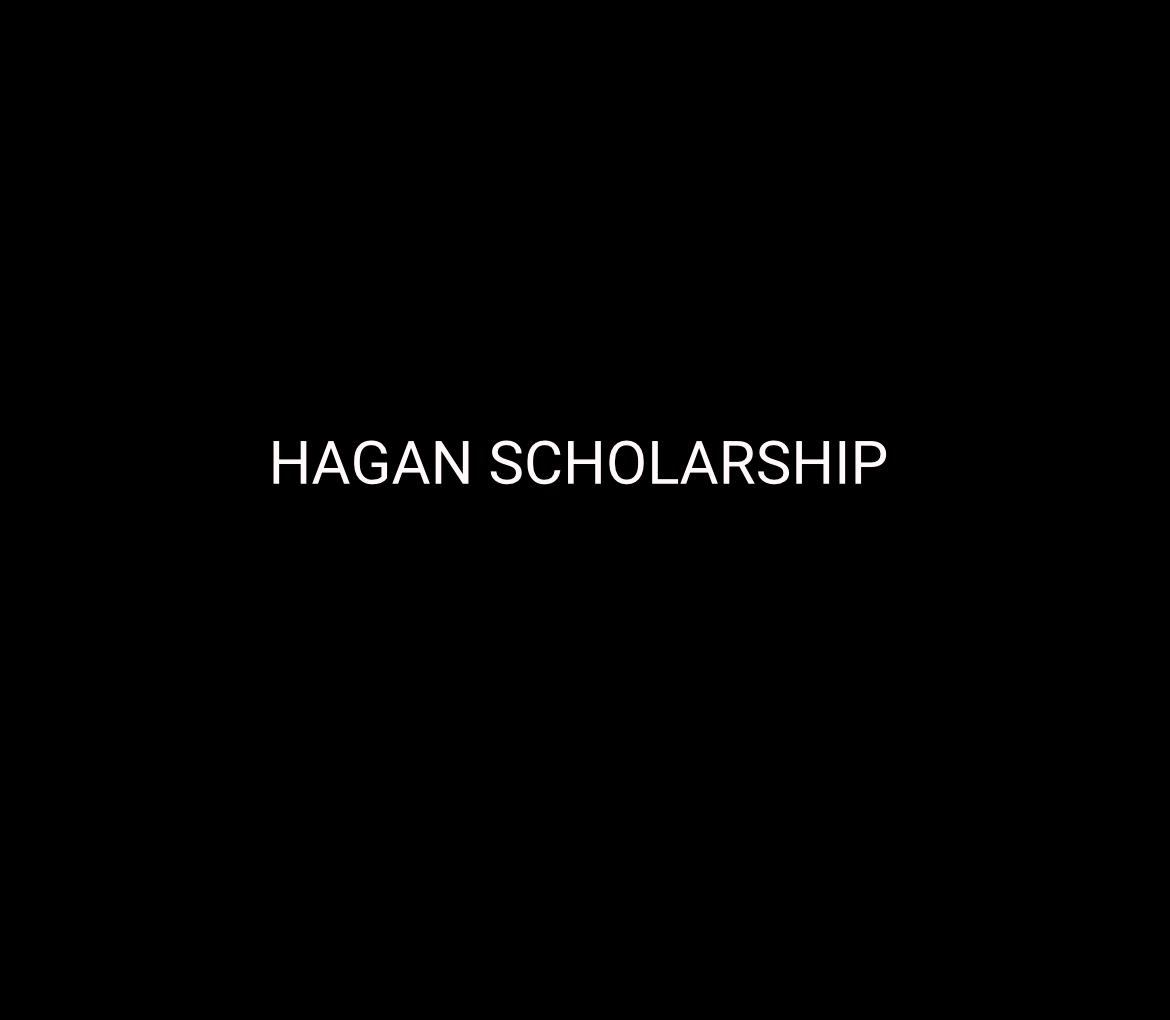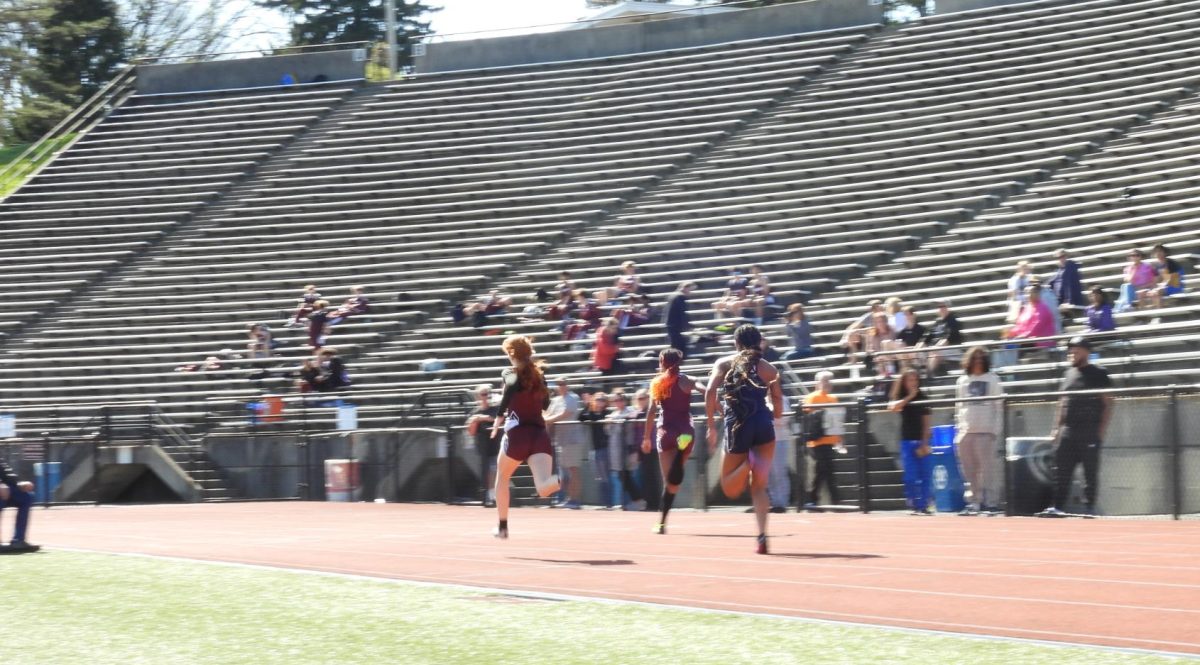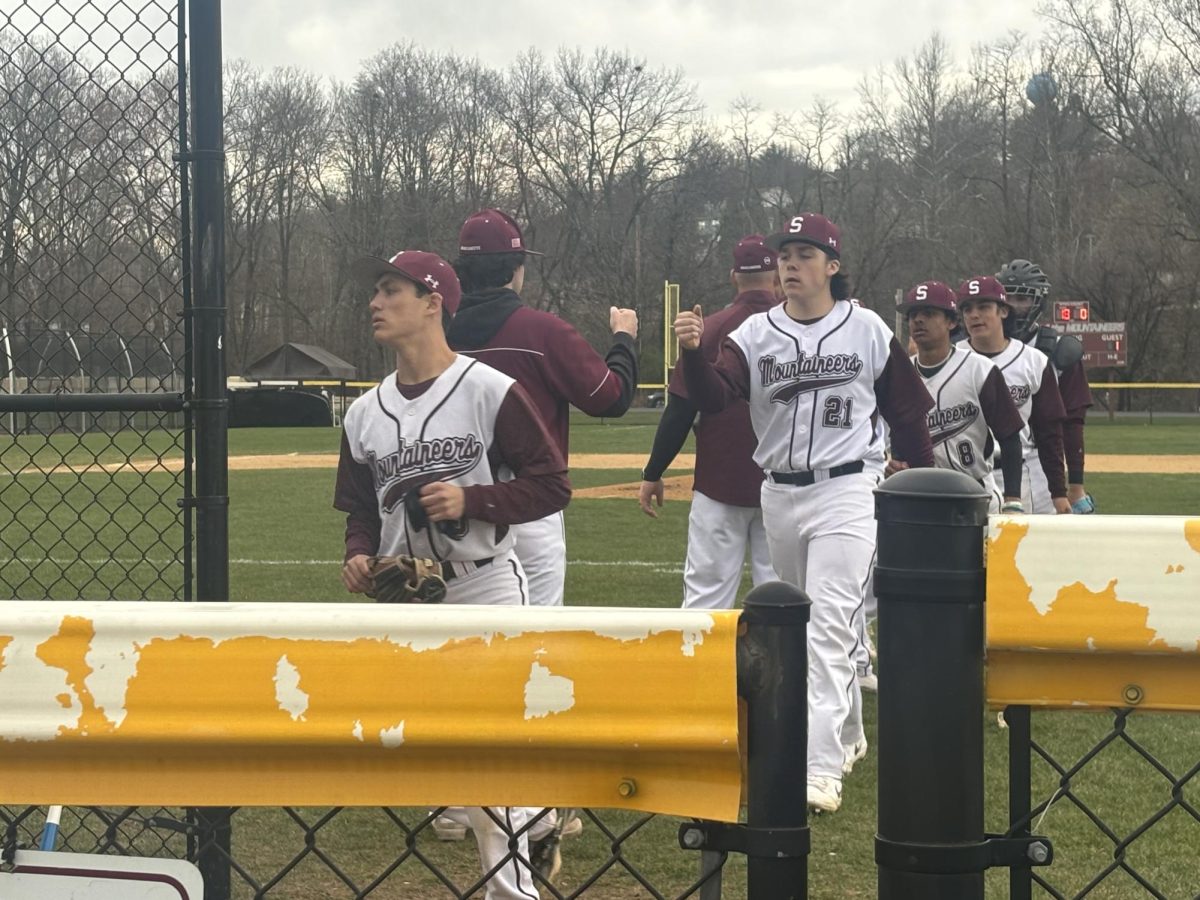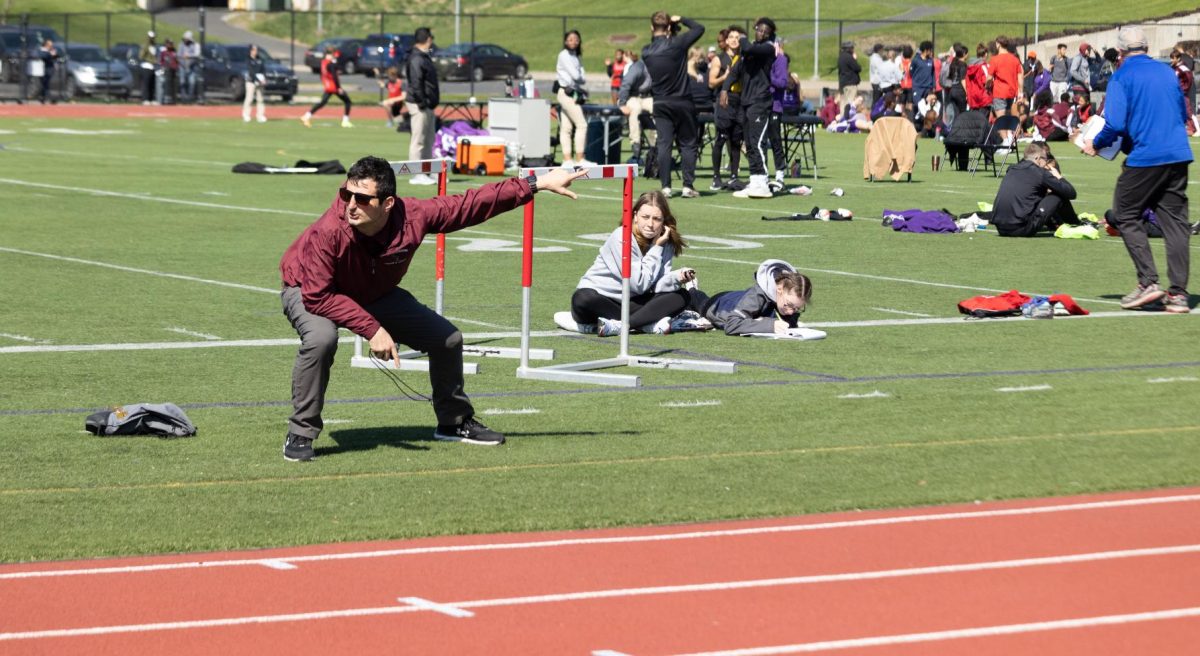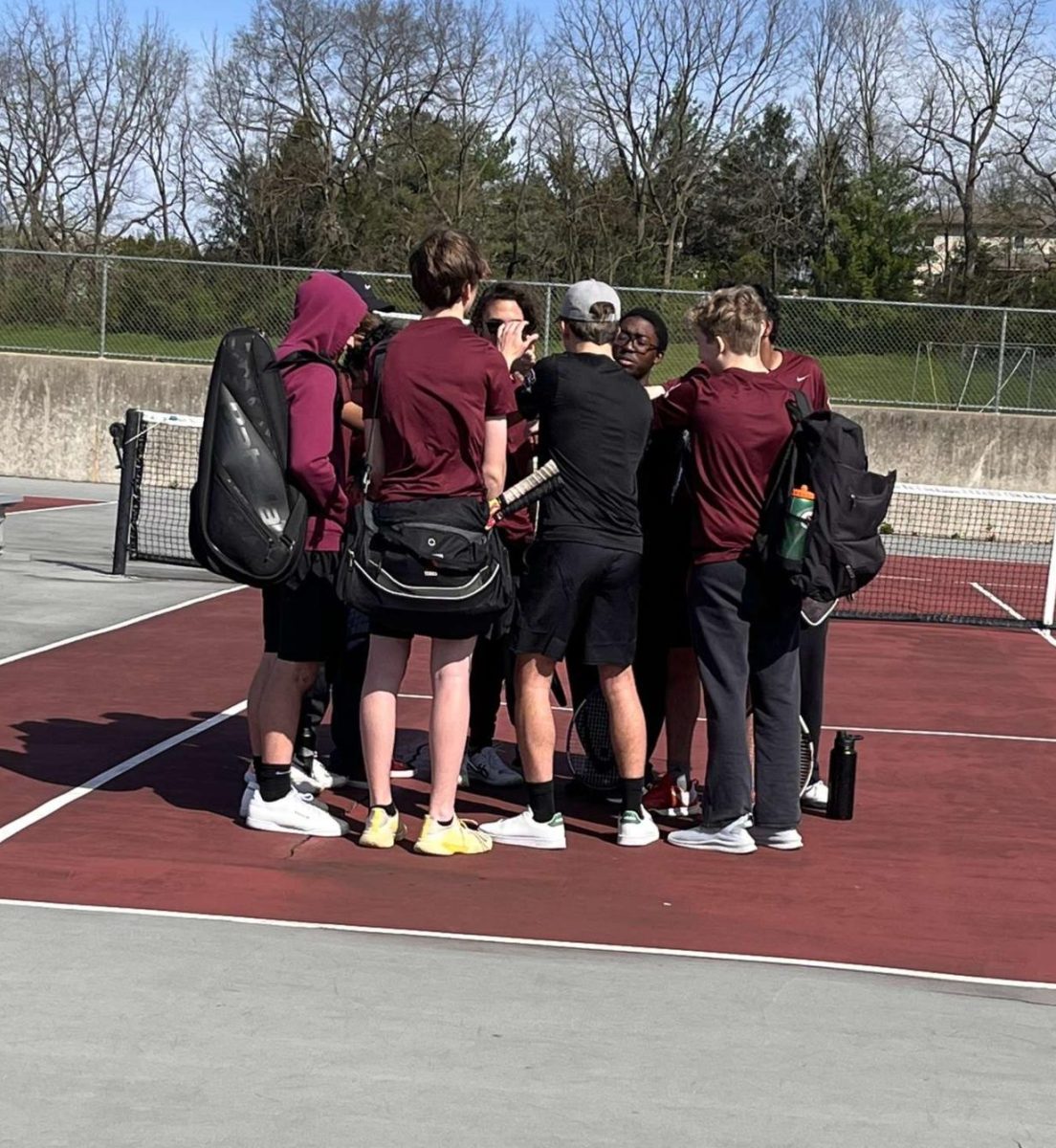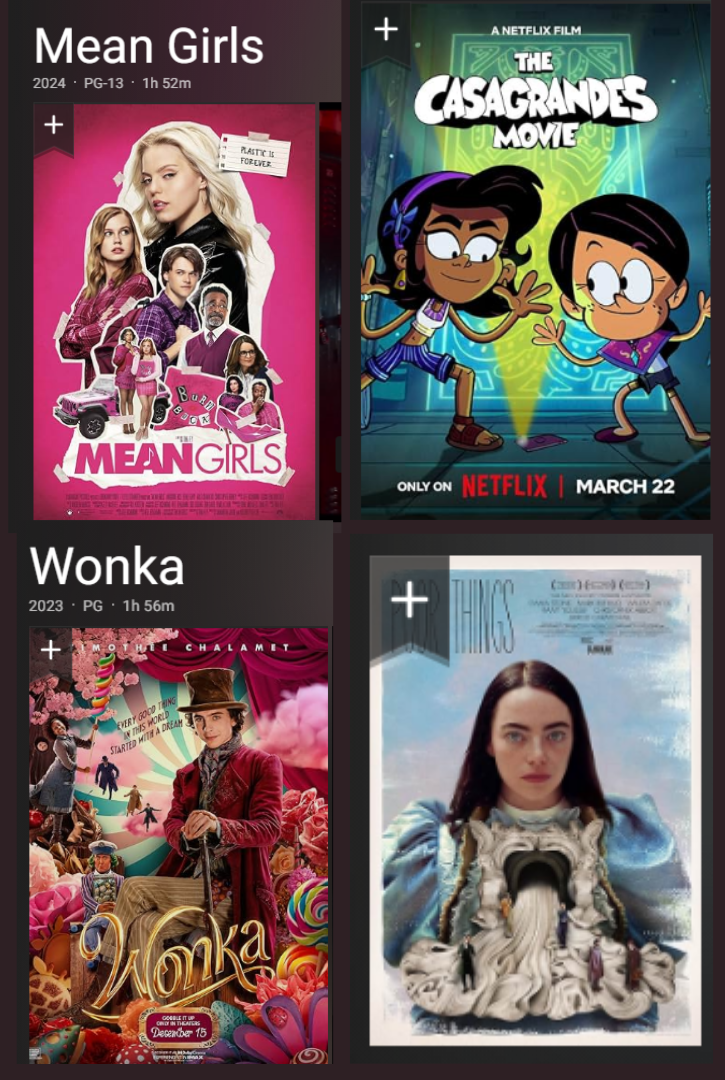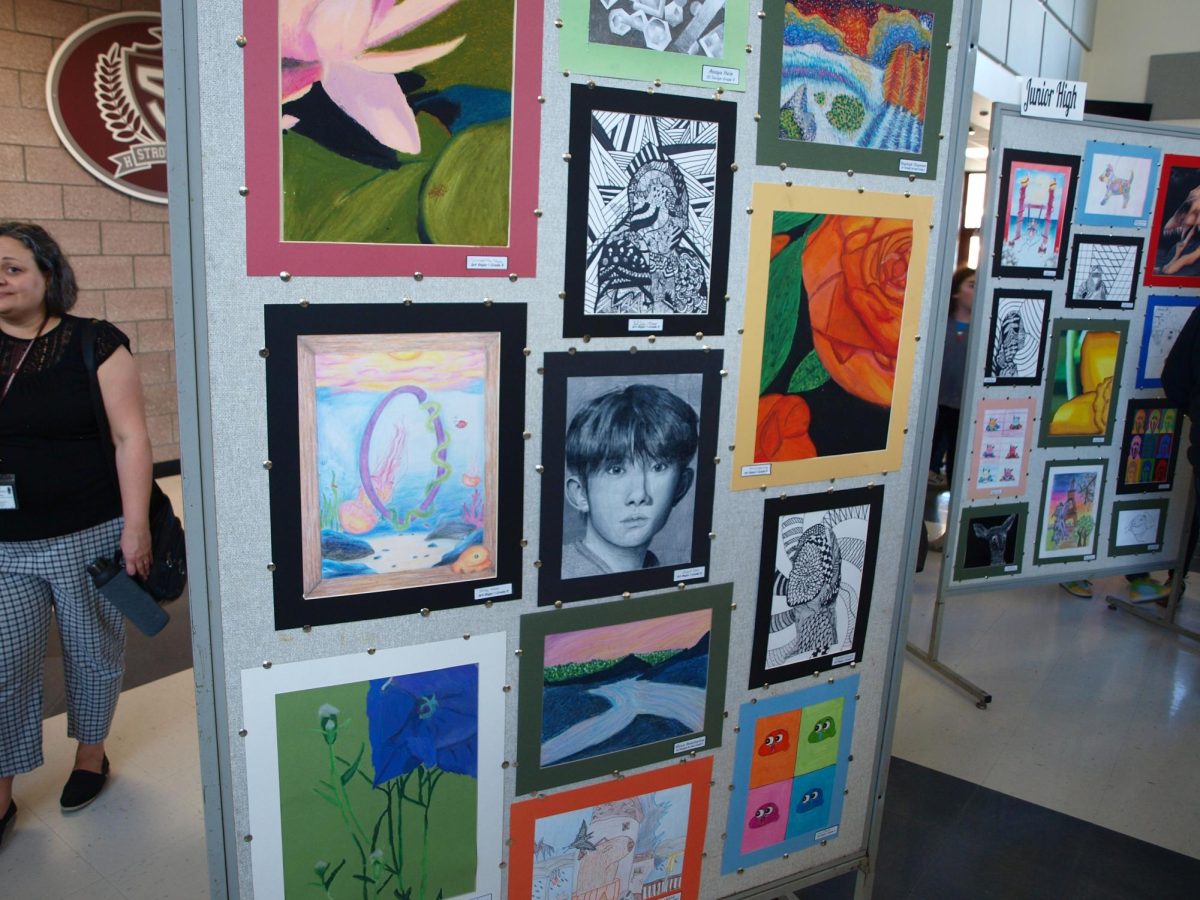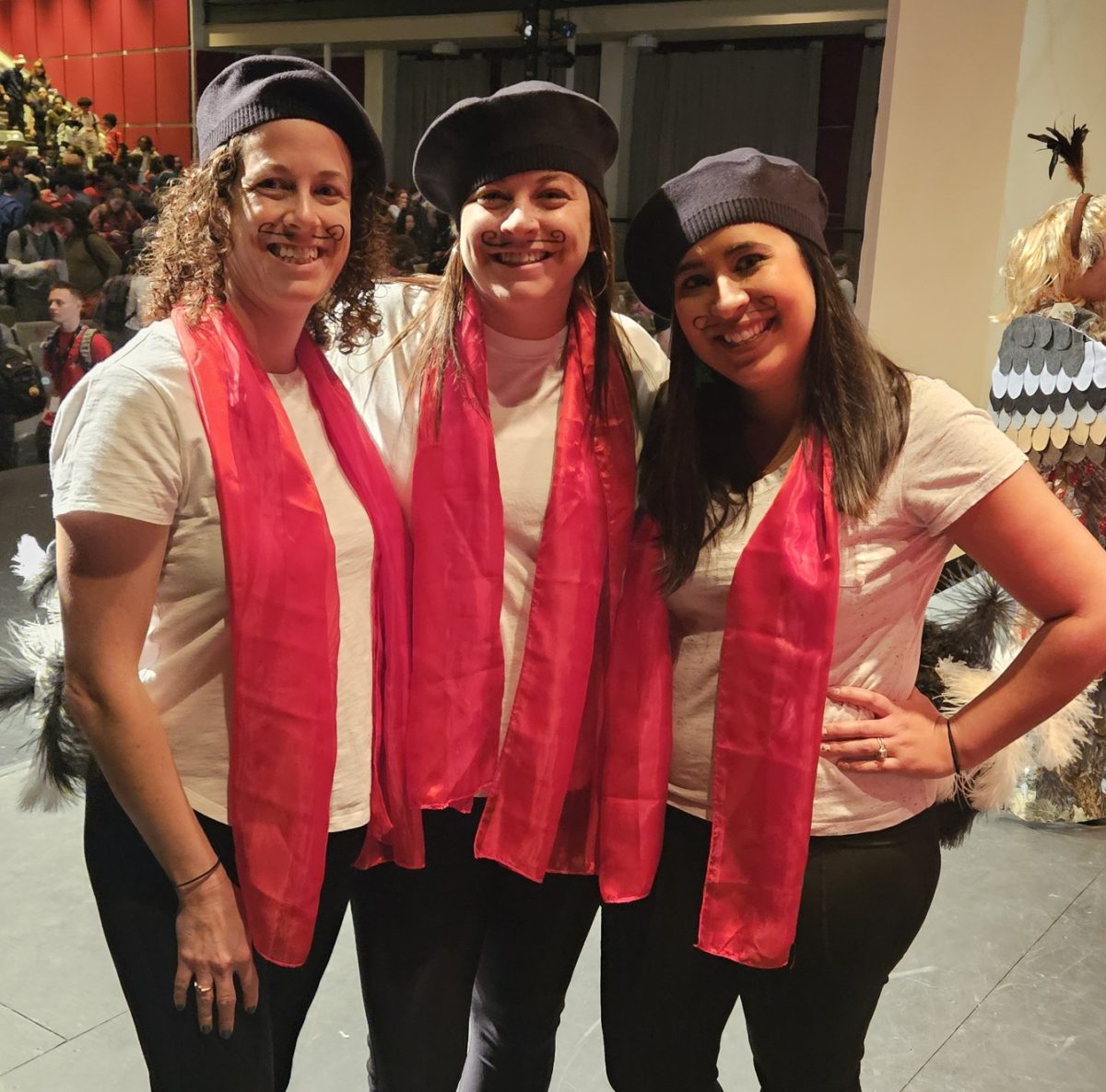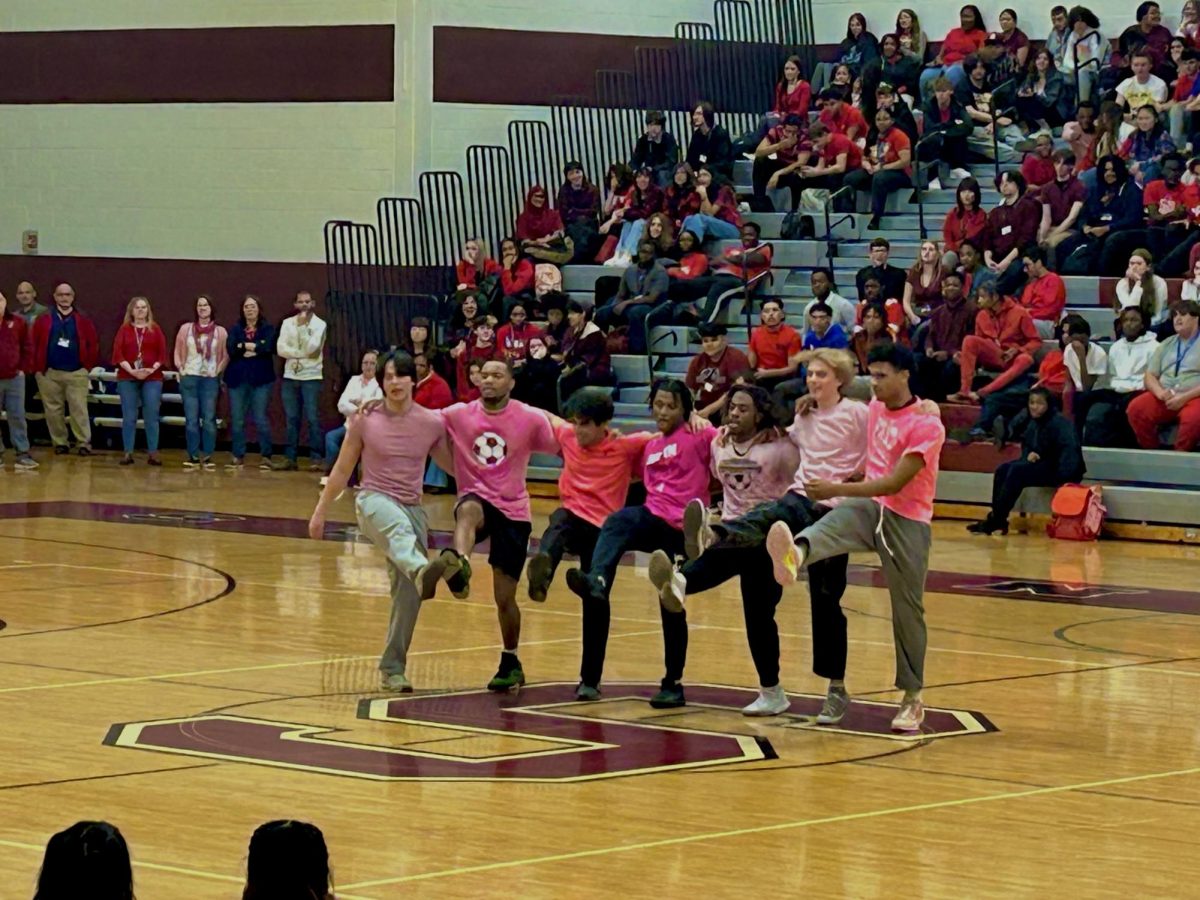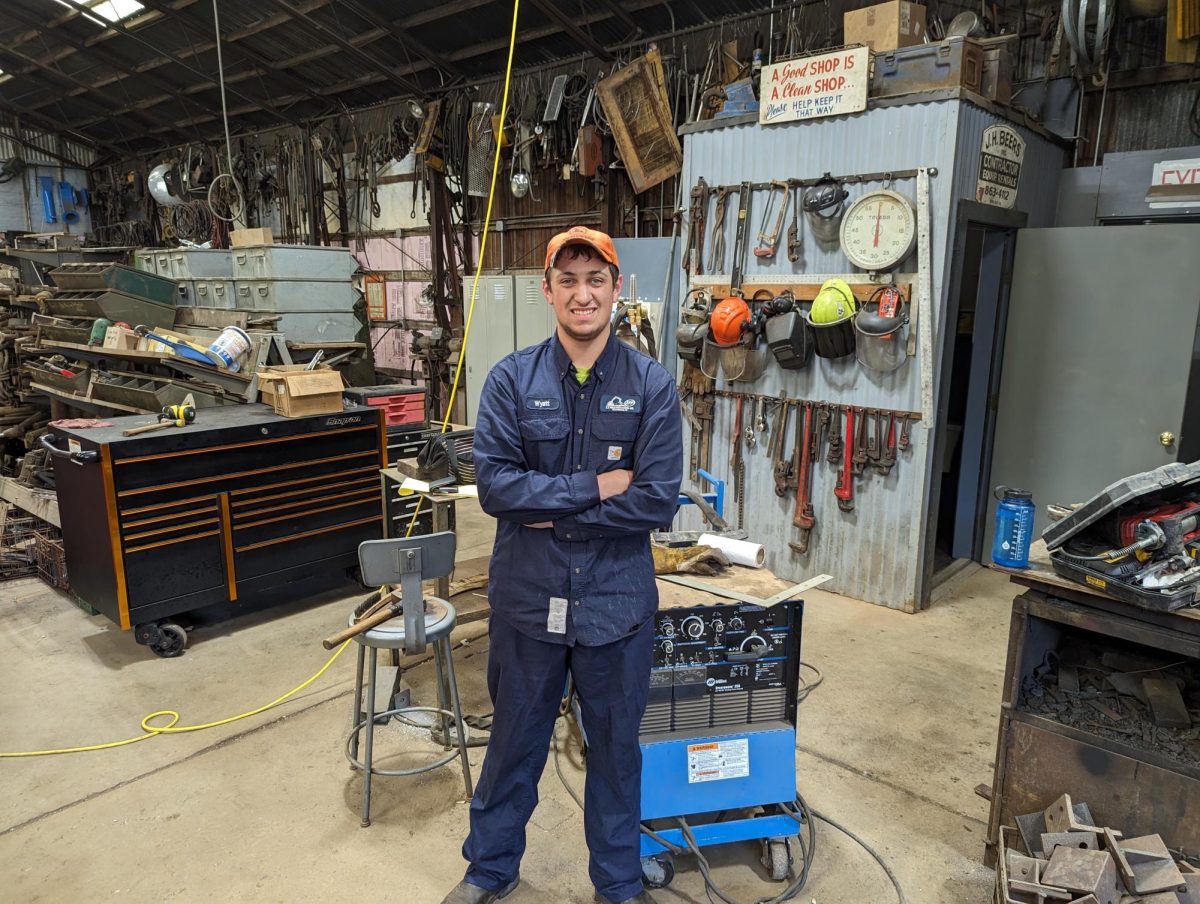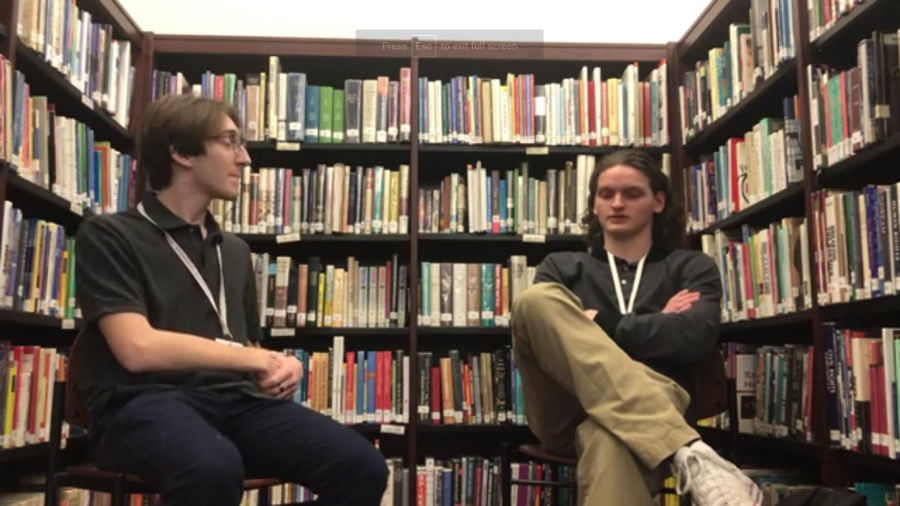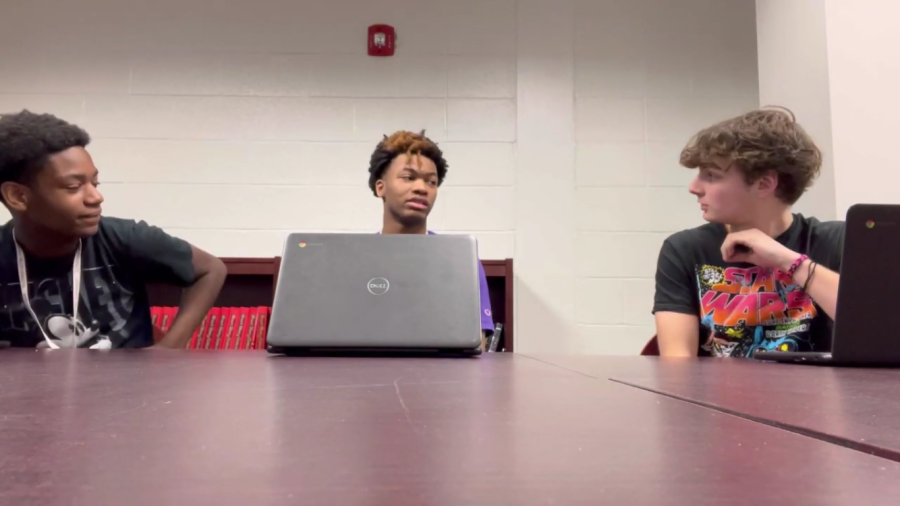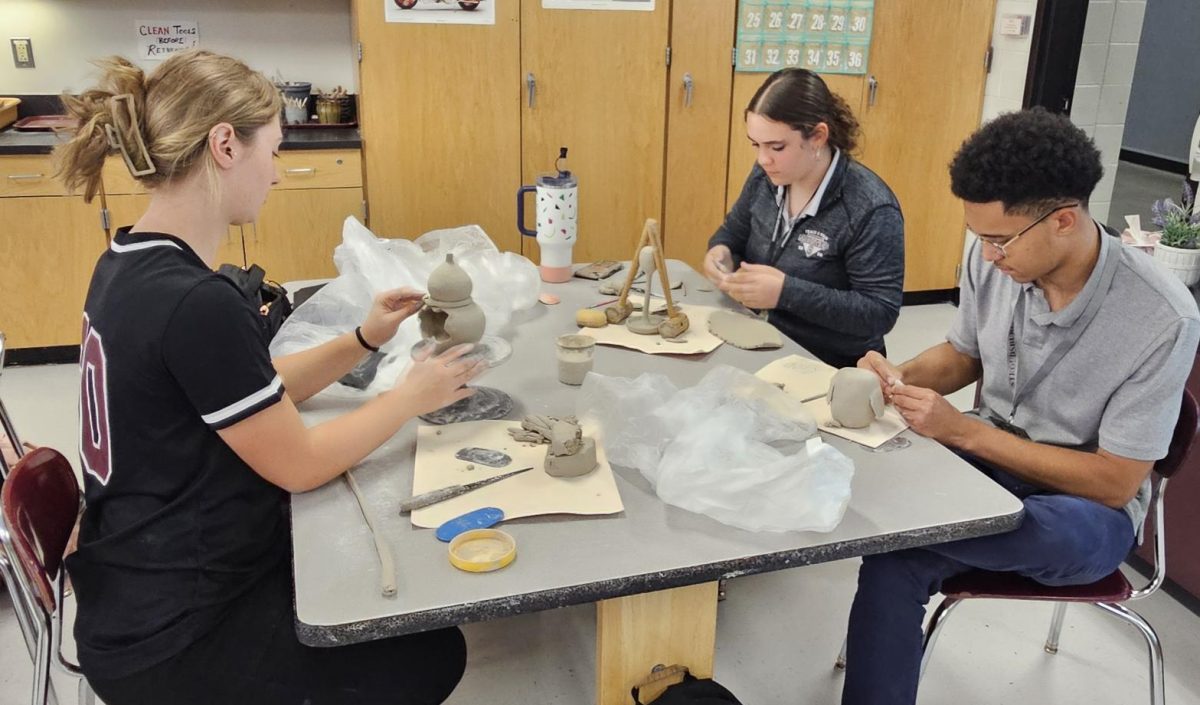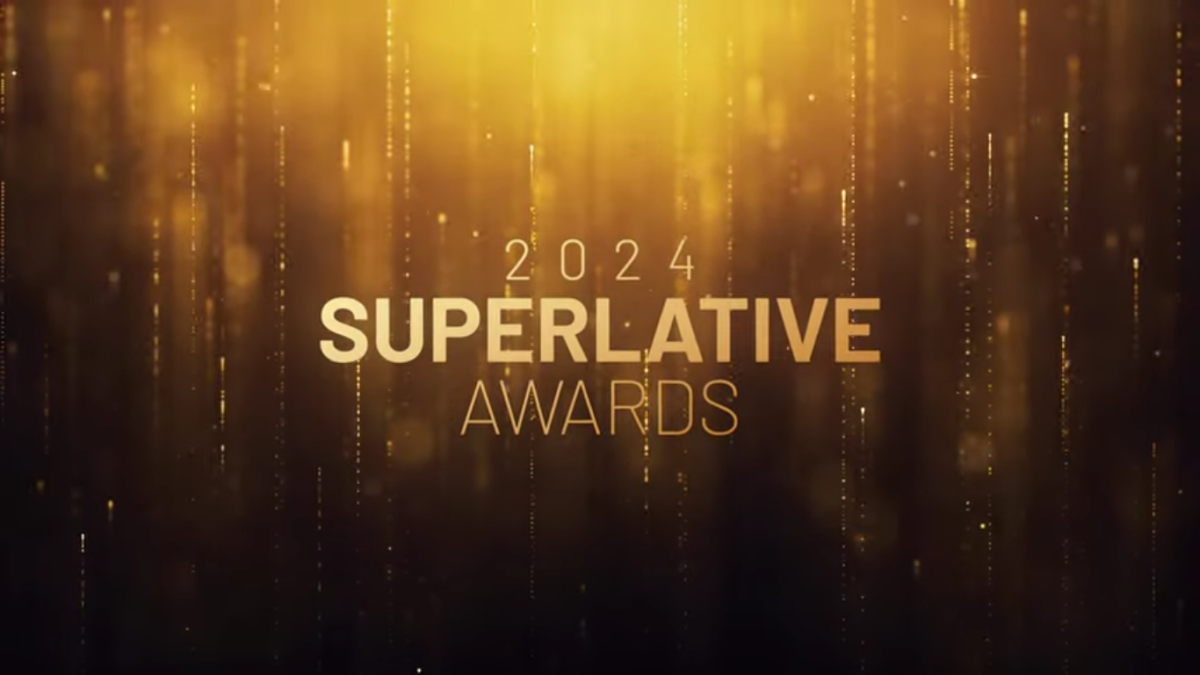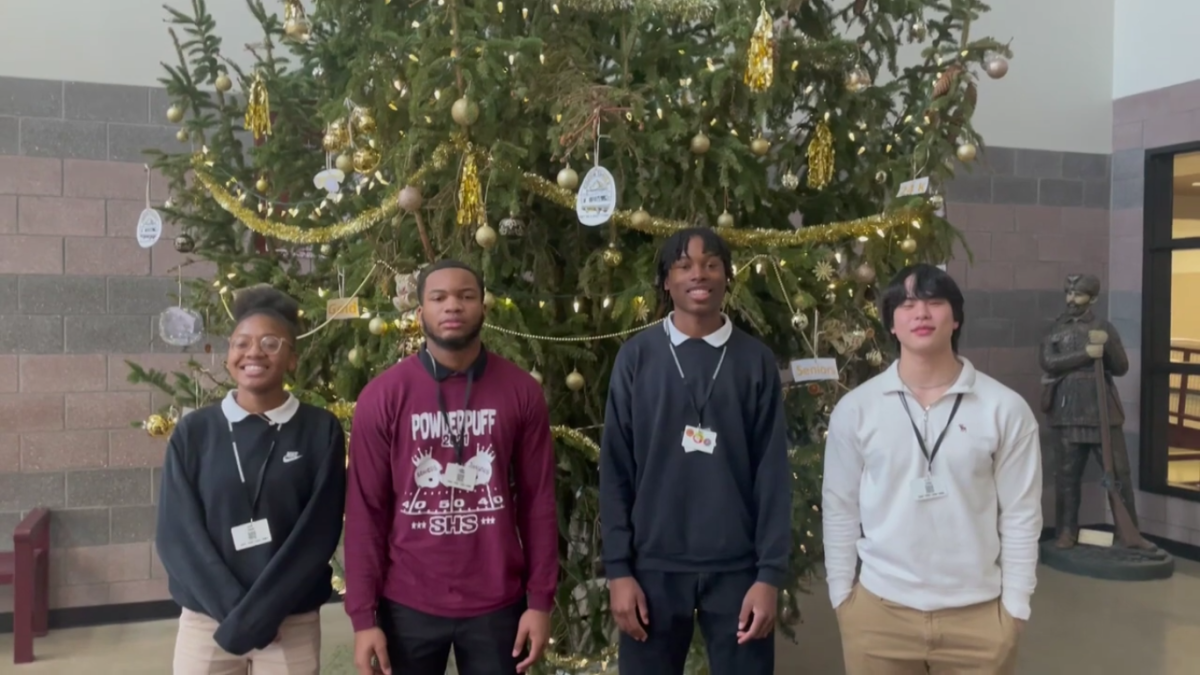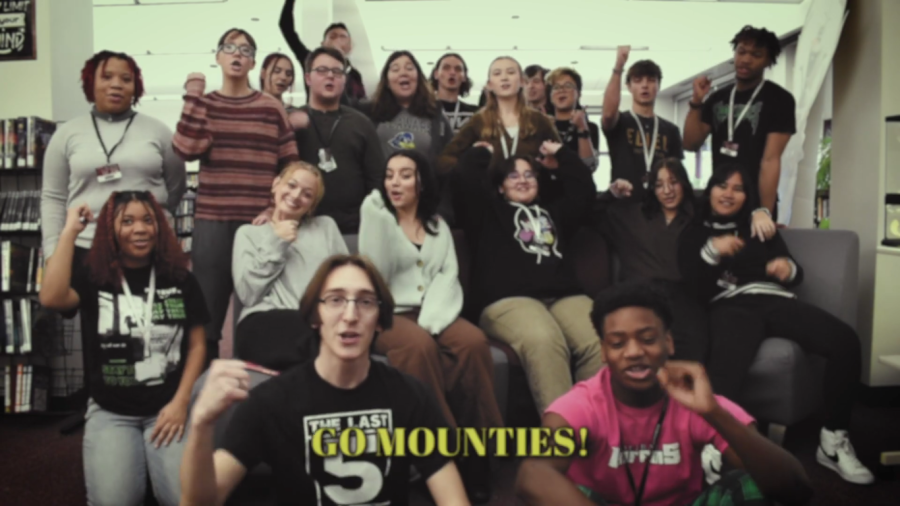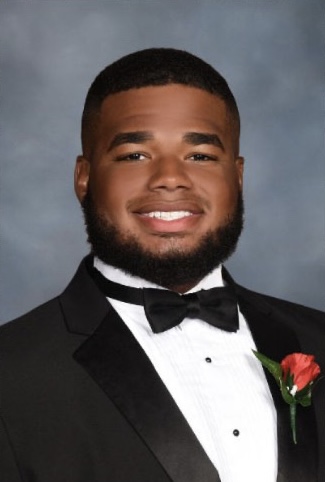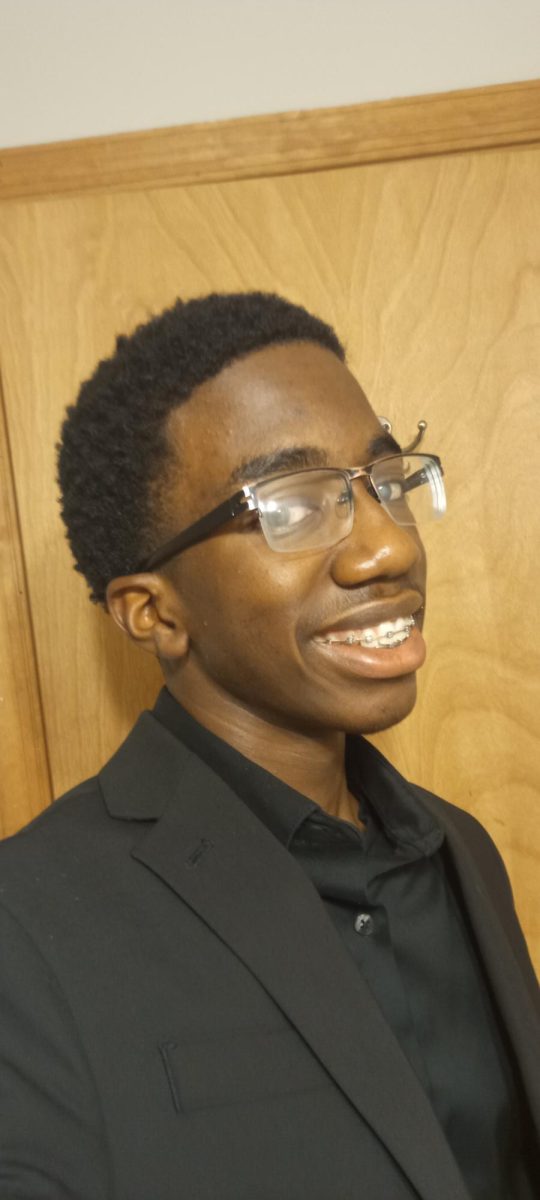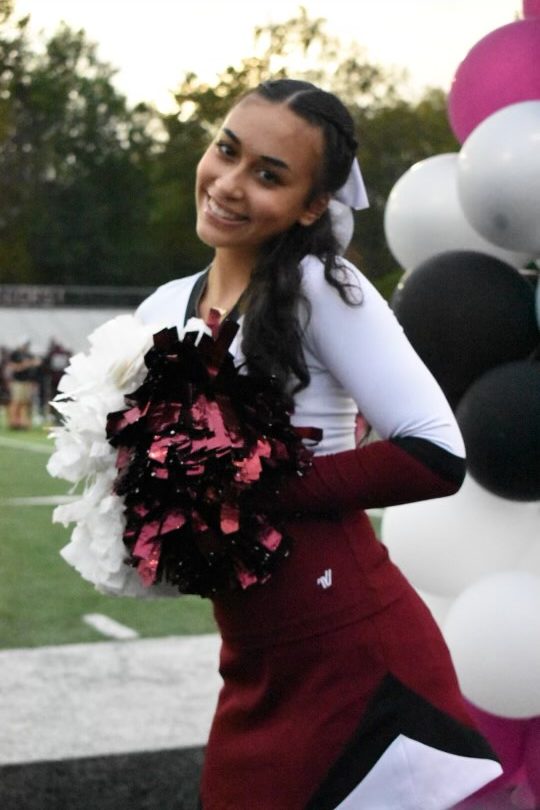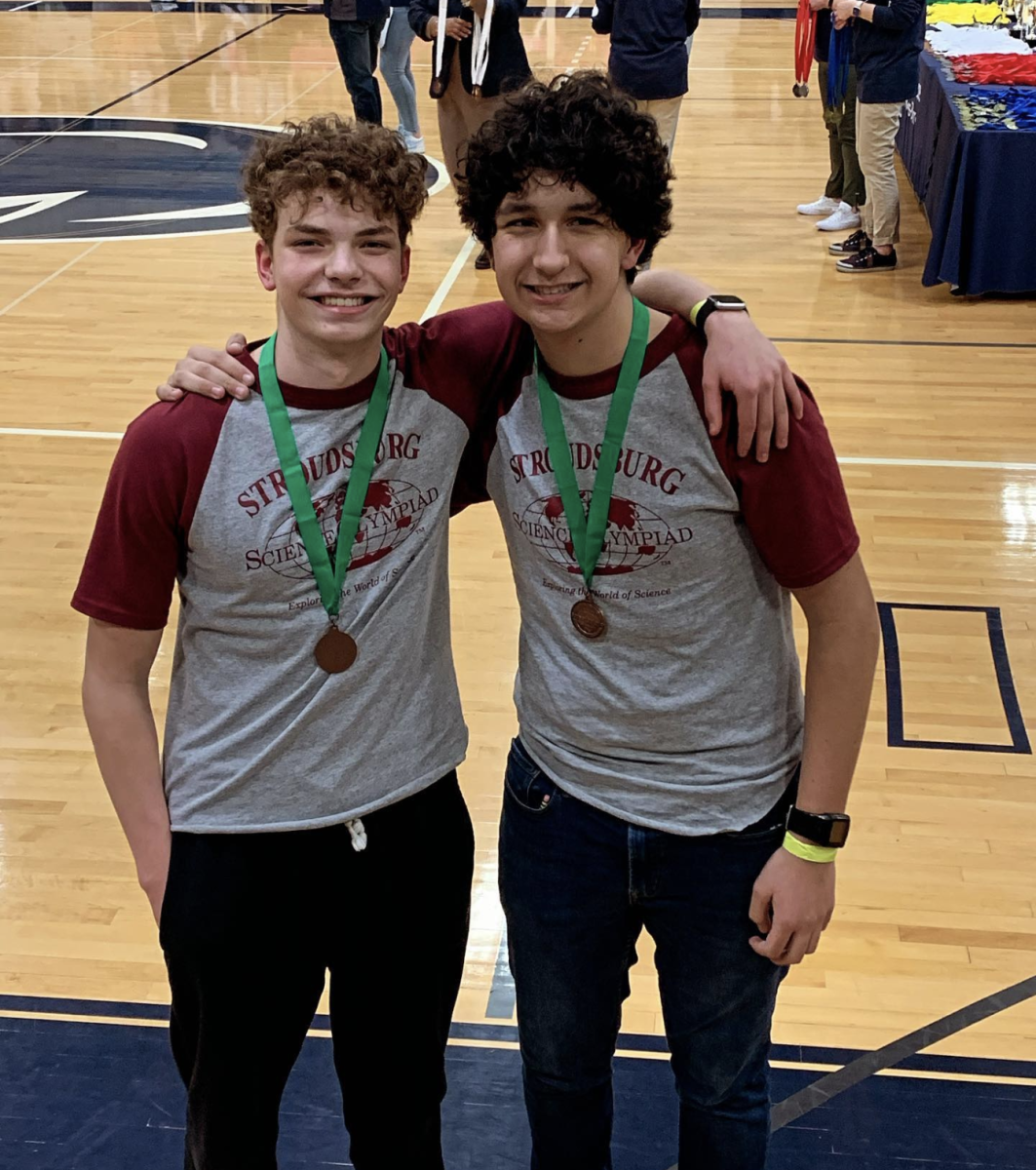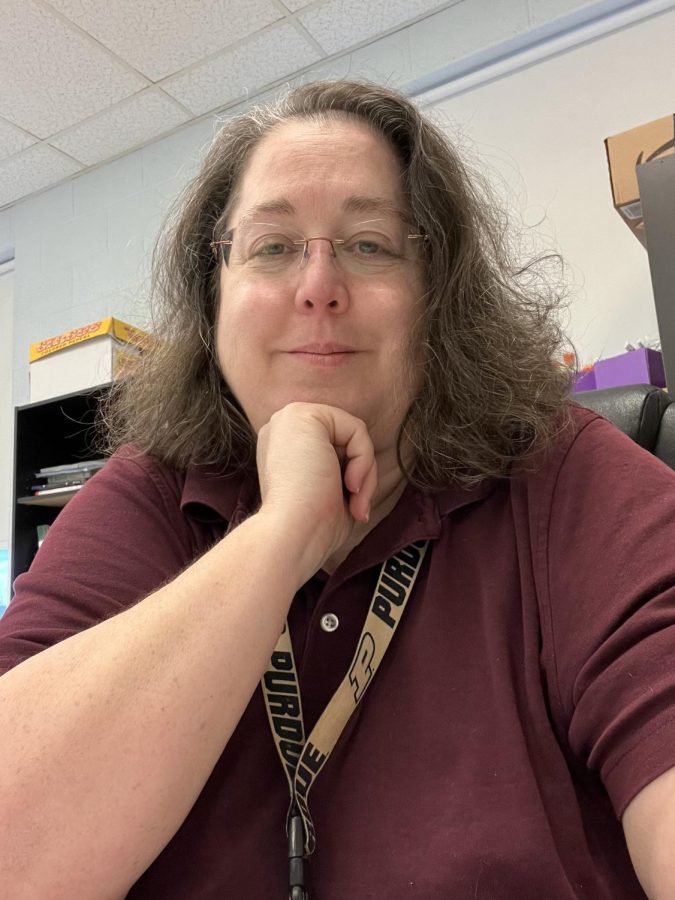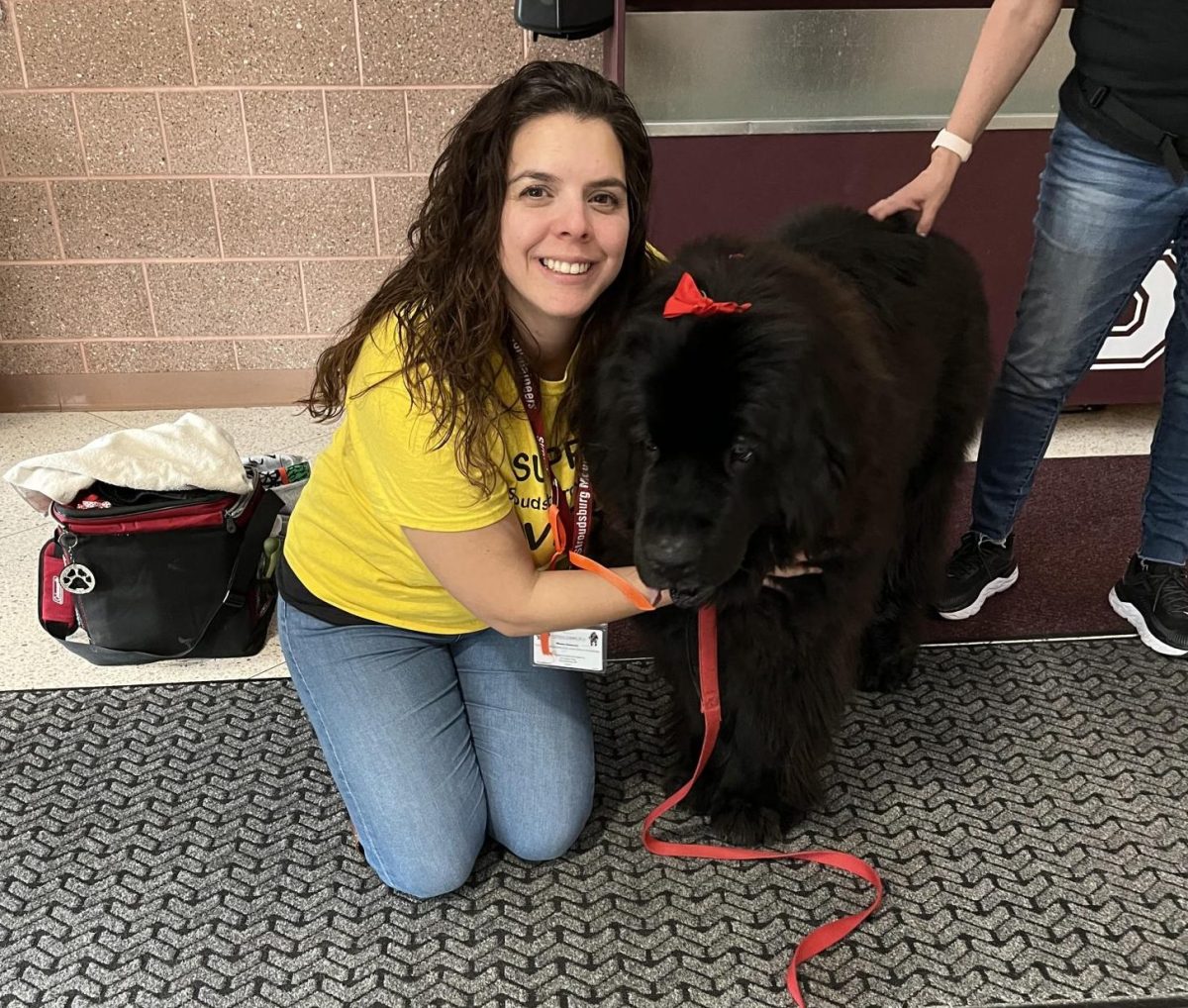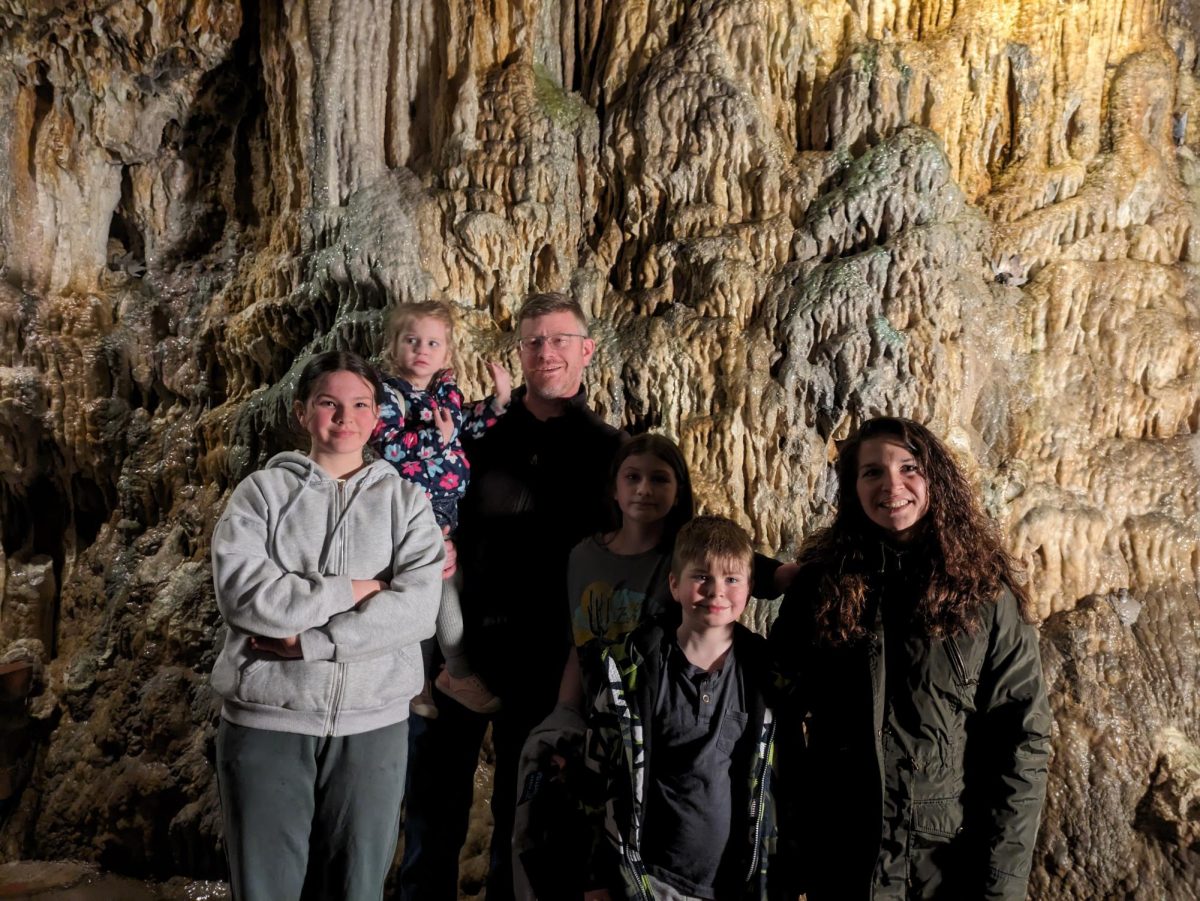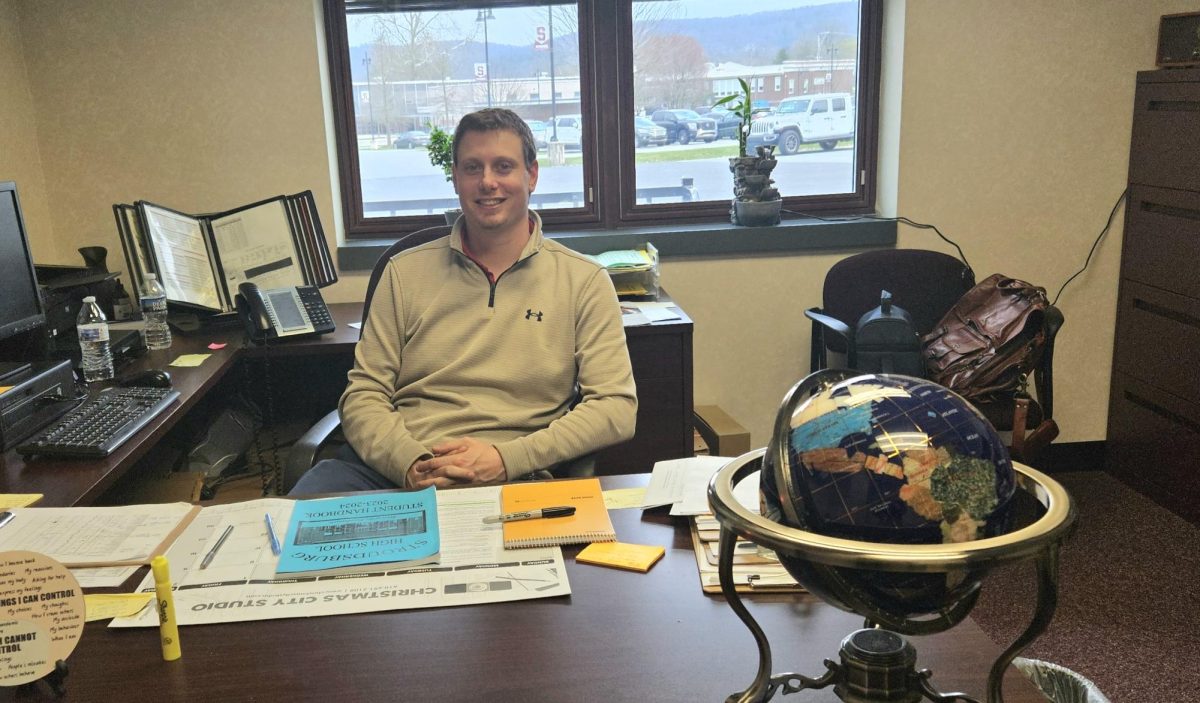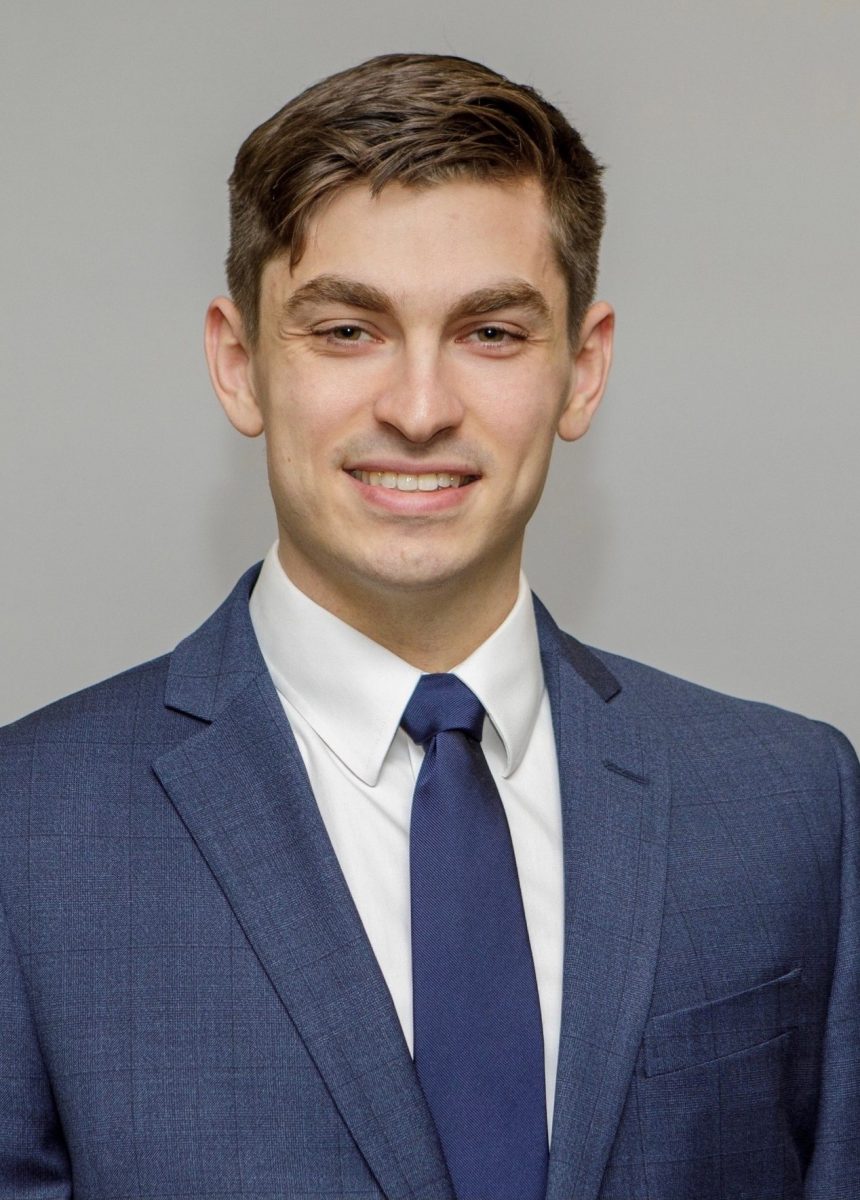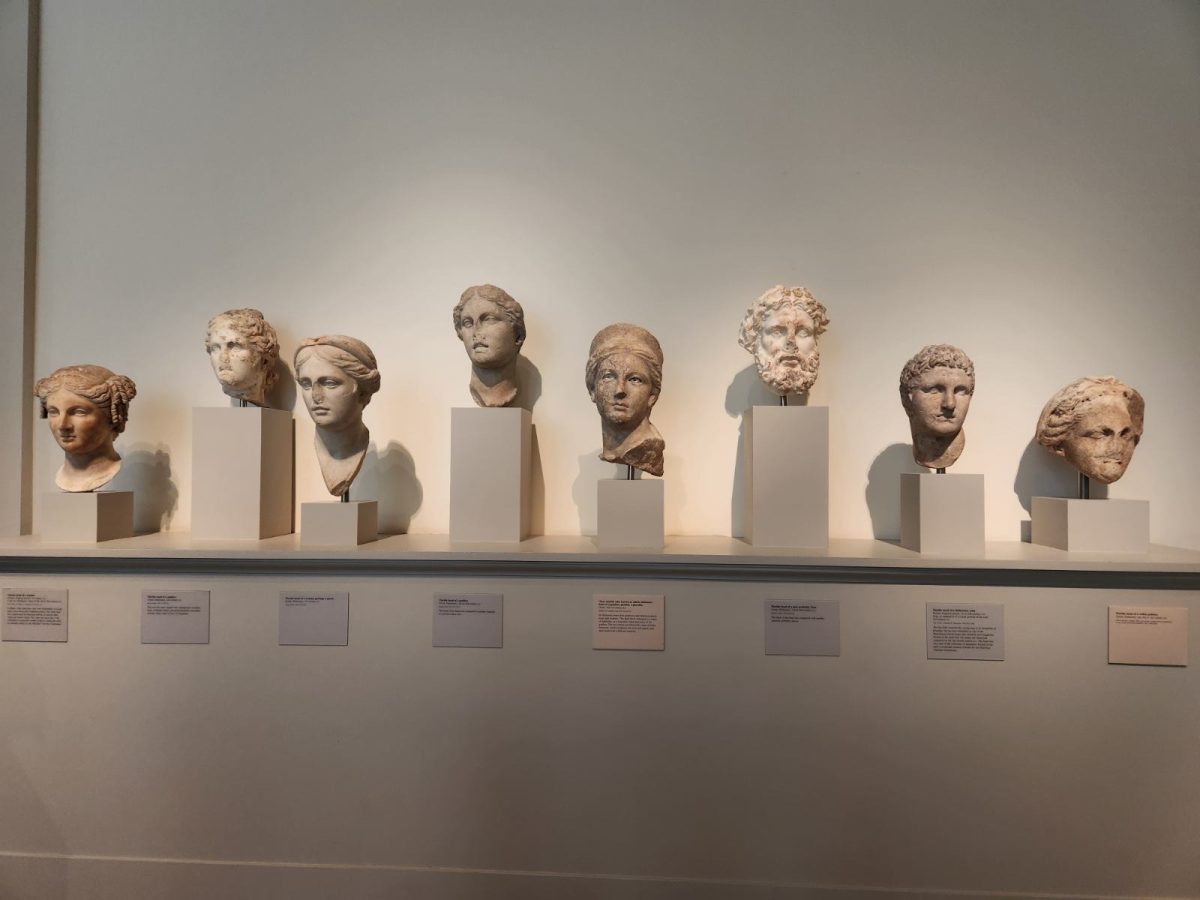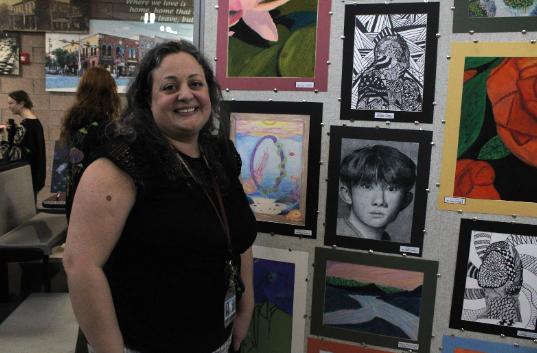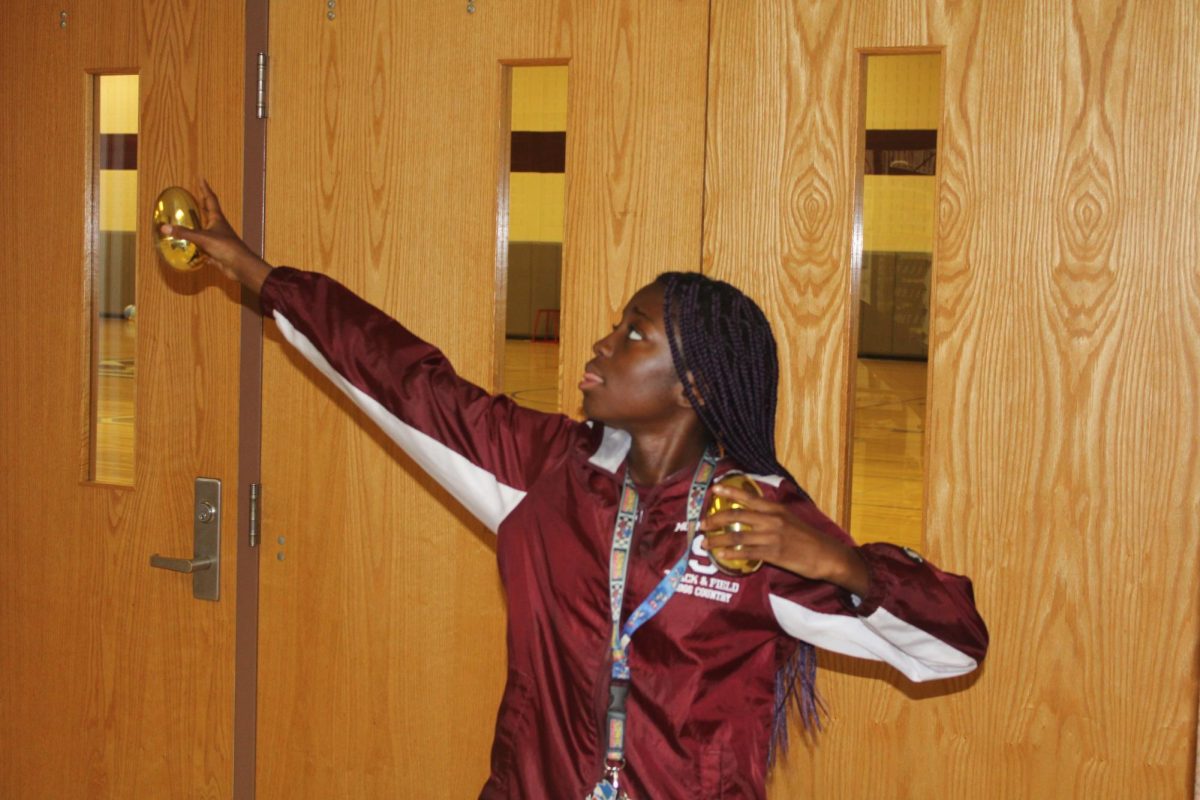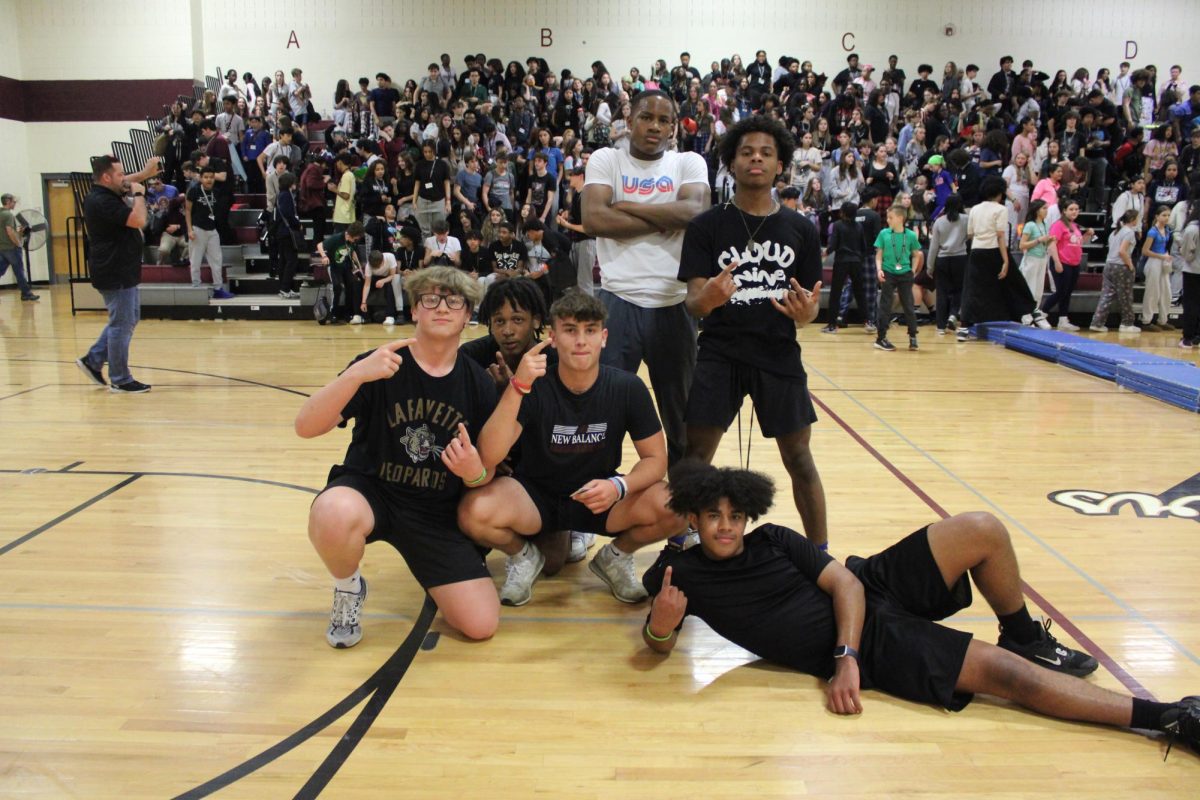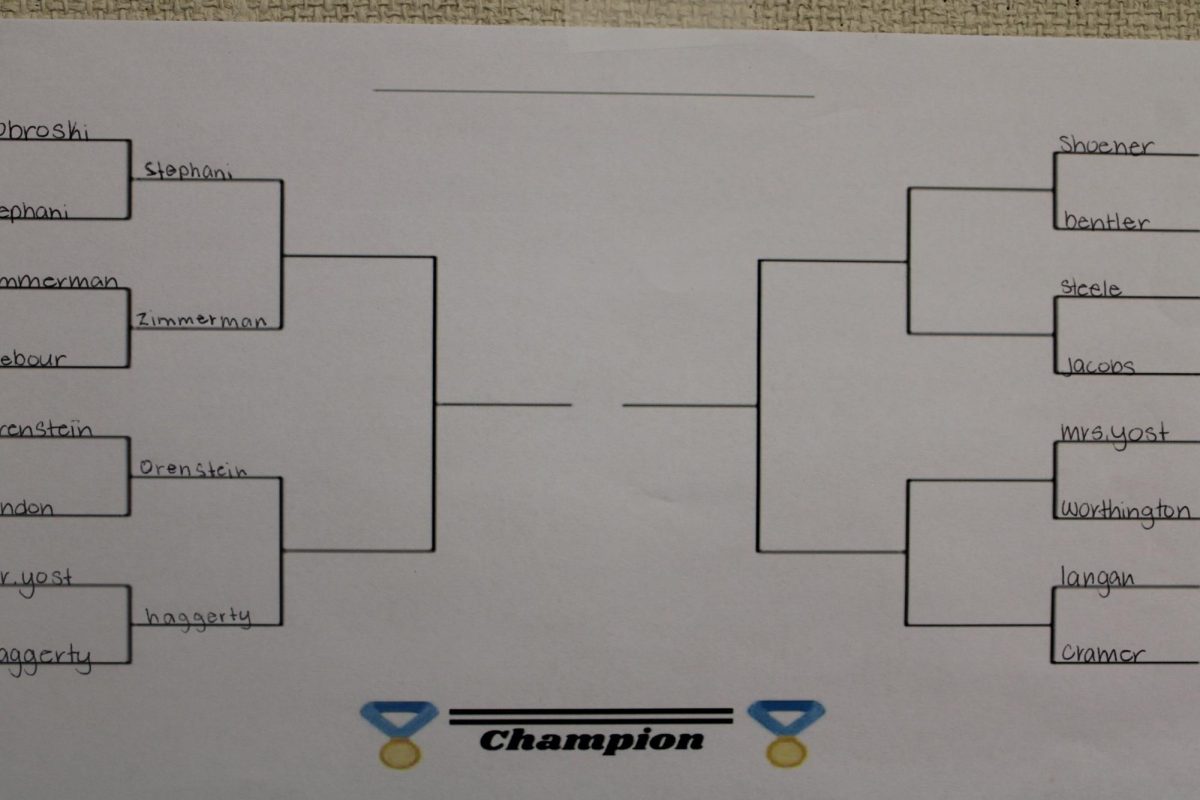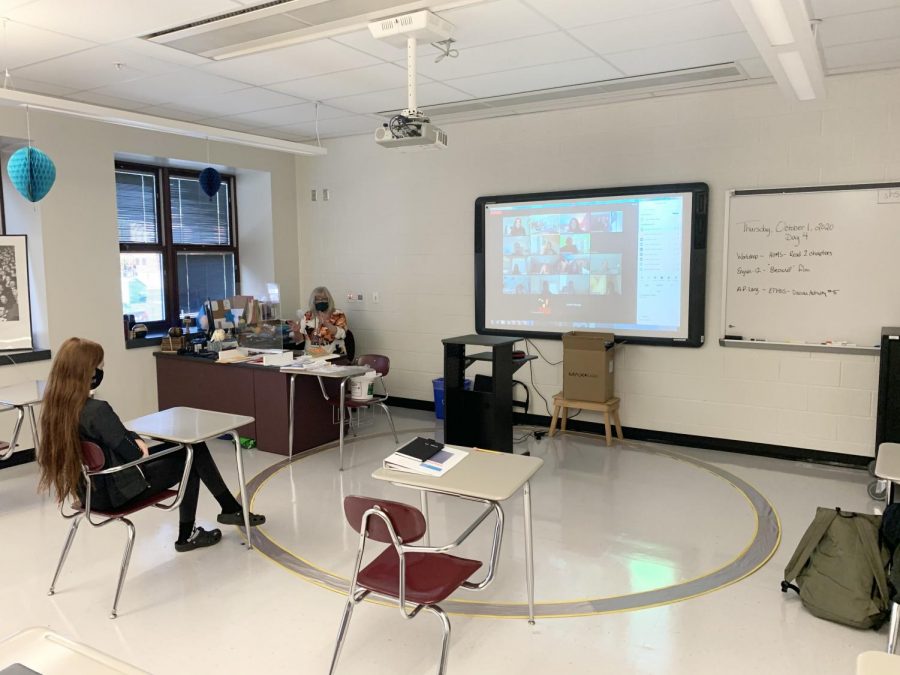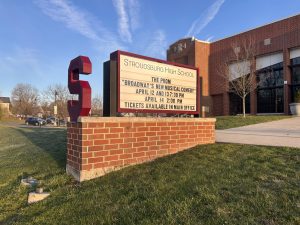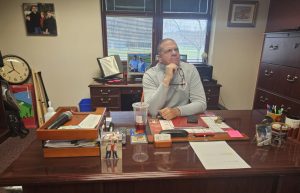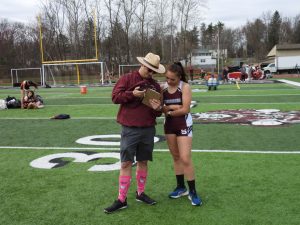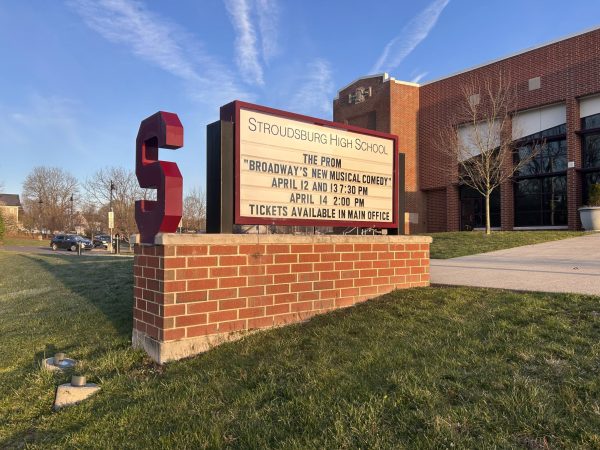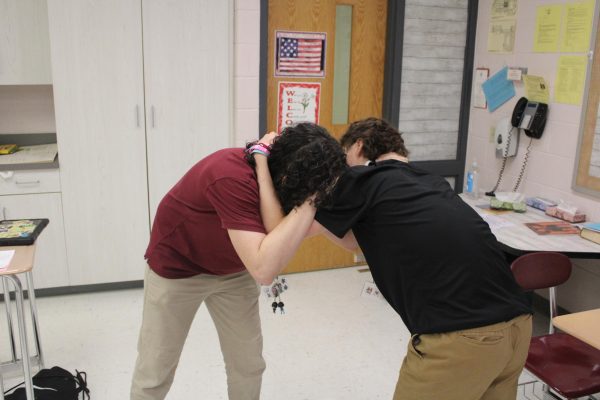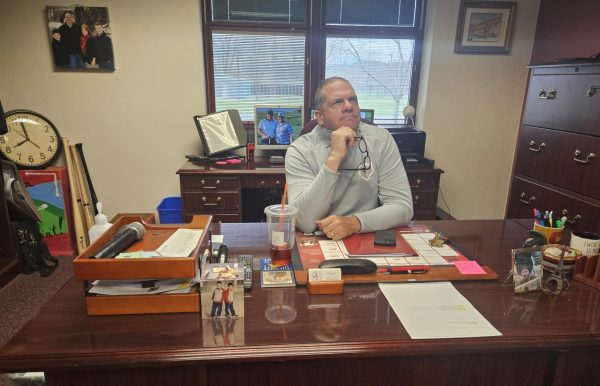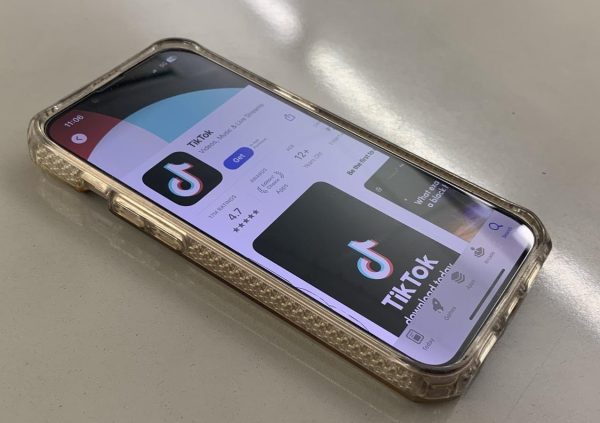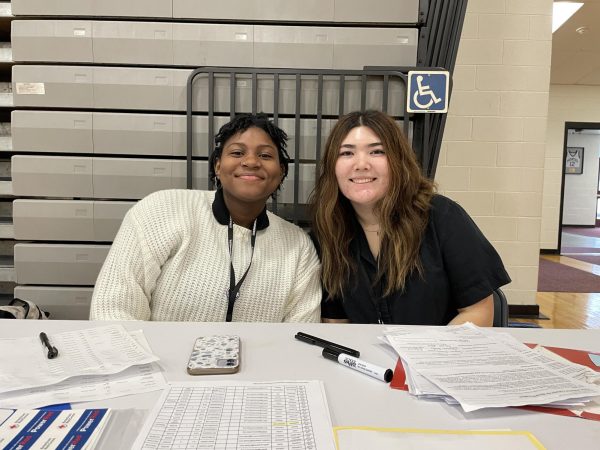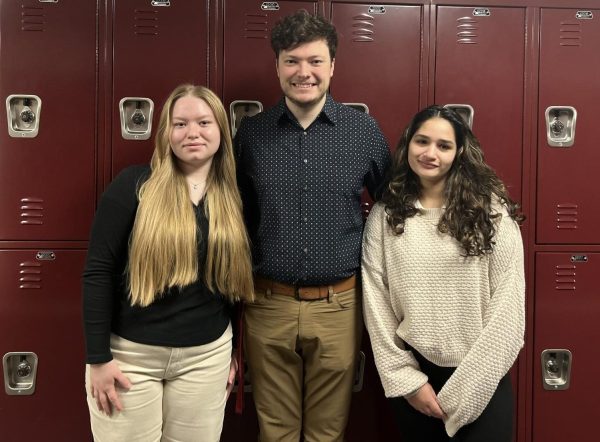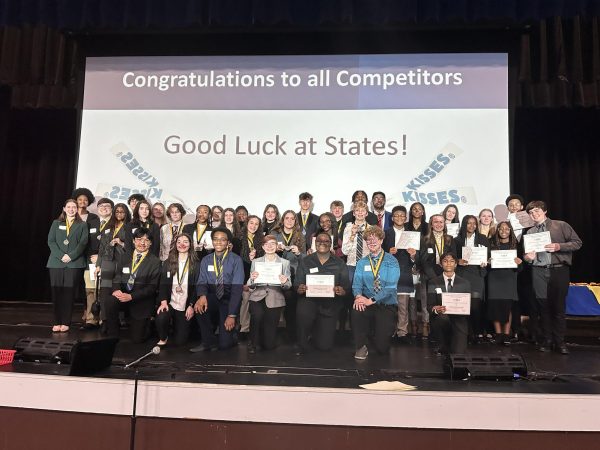Teachers adjust to the challenges of the hybrid learning model
English teacher Mrs. Griswold teaches both in school and remote students simultaneously.
October 12, 2020
The COVID-19 pandemic has caused changes and altered the lives of practically every person on the earth this year.
Arguably nobody has been more affected by these changes than teachers, including those at Stroudsburg High School. As the new school year has started, many teachers have been forced to learn new ways of teaching, while the school has adapted to the hybrid model for learning.
This hybrid model allows for a safer learning environment for students, but it presents new challenges to teachers. With some students in the classroom, while others are learning remotely, teachers have to be in two places at once, involving both sets of students in an abbreviated class period.
This year, technology has played a more significant role than ever before. As a result, teachers have had to make major adjustments to change the way their classrooms work each and every day by incorporating technology. This has not been easy.
“Not having contact with those people who are full remote has been the hardest hurdle for me,” said music teacher Ms. Lisa Rogers.
Even if there are no flaws in technology, there is still one thing missing from this year. The lack of interaction has been one of the biggest adjustments for teachers.
“Interaction with kids, no doubt about it,” has been the hardest change for English teacher Ms. Shari Griswold. “When you’re explaining a concept, or talking about a subject, and being able to actually look in kids’ eyes, that is when you can see whether or not learning is happening.”
This frustration has been shared by many teachers. Remote students can be difficult to connect with because there is a lack of live human interaction.
Yet, some teachers have more easily adapted to the hybrid model and the new use of technology.
“I worked in IT for a little while when I was in college, so I’m pretty good with tech,” said math teacher Mr. Connor Chalfant.
A national study from CNBC News found that 52% of students are learning virtually to start this school year, and 19% are learning via a hybrid model. The remaining percentage go to school every day. This means that the majority of schools, just like SHS, have to rely on slow, faulty video calls.
Despite all of the changes, SHS principal Mr. Jeffrey Sodl believes the entire staff at SHS has been working hard to provide the best possible education for the students by whatever means possible.
“I think they have handled it exceptionally well,” said Sodl.
Whether teachers have to utilize new technology, or grade on Google Classroom, they are all adapting to the changes while also striving to provide students with the best education possible.
For more statistics on the new school year, visit:
For more on how teachers and students are adapting, visit:


